When searching for what to see at Omaha Beach in Normandy, prepare for several incredible sites and lots of emotion. Omaha Beach is the most well-known (ergo the most crowded) but also the most heart-wrenching of the five D-Day landing beaches.
There are many worthwhile sites to see here in the Omaha Beach sector for a World War II enthusiast like you. You can be sure to leave here with a better understanding of what the American troops accomplished and a greater appreciation for the Normandy invasion.
Don’t miss my posts on everything to see at the other four D-Day landing zones: Utah Beach, Gold Beach, Juno Beach, and Sword Beach.
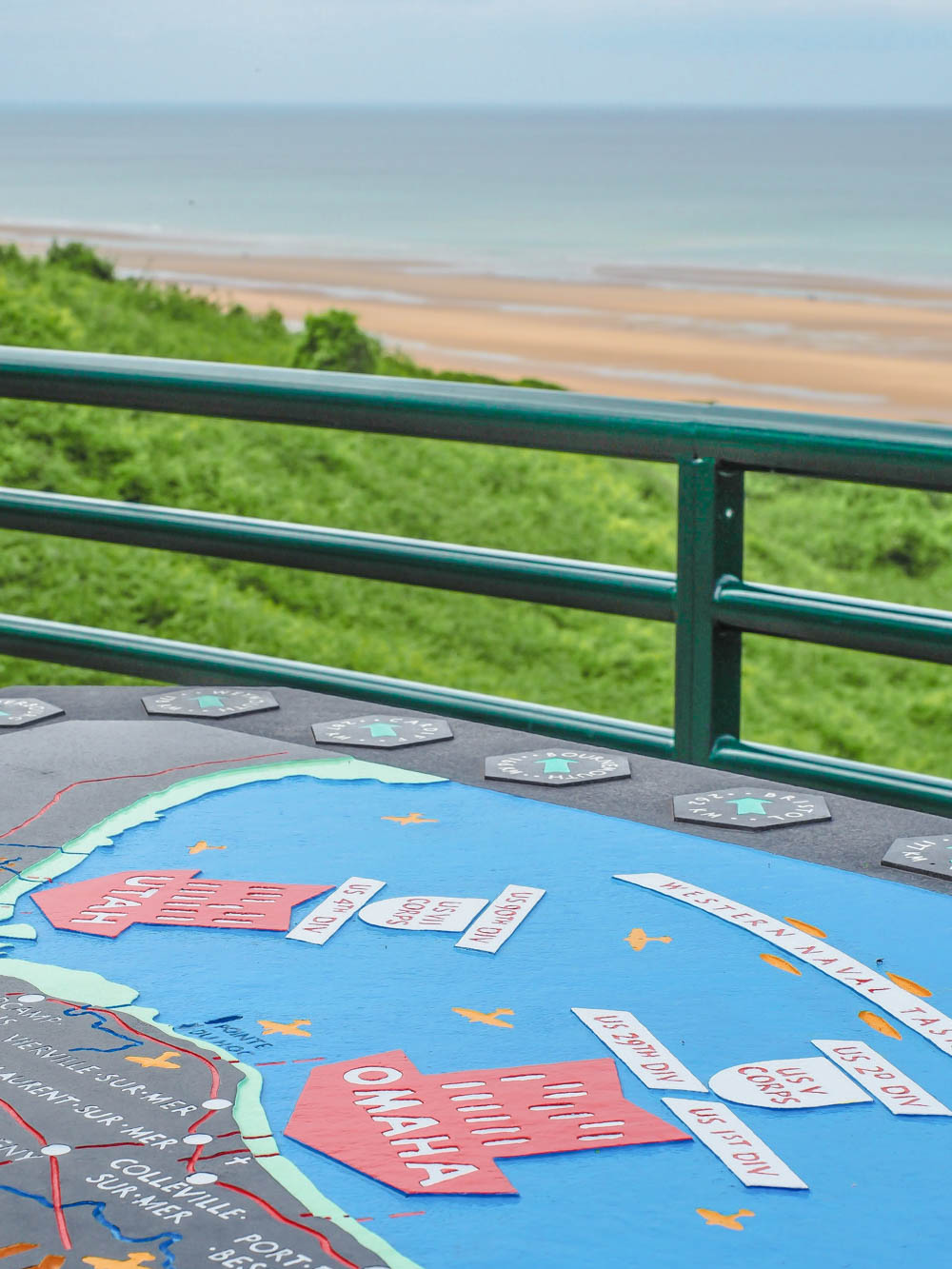
D-Day at Omaha Beach: What happened?
On June 6, 1944 more than 34,000 American troops landed on Omaha Beach, the largest of all the D-Day landing zones. Here’s a quick rundown of what happened after they invaded Omaha Beach on D-Day:
Omaha Beach objective: Establish a 5-mile deep (8km) beachhead that stretched from the Vire River in the west to Port-en-Bessin in the east. At these points, link up with the other American troops at Utah Beach and the British troops at Gold Beach.
Omaha Beach casualties: Of all the D-Day landing zones, Omaha Beach saw the greatest loss of life with more than 2,000 troops killed, wounded, or missing.
Omaha Beach units: Including air and amphibious landings, the units that landed on Omaha Beach included:
- 1st Infantry Division, commanded by Lieutenant General Clarence Ralph Huebner
- 29th Infantry Division, Major General Charles Hunter Gerhardt
- US Army Rangers
Omaha Beach outcome: A hard-won Allied victory
Will you also be visiting Paris on this trip? Don’t miss all the WWII sites in Paris too and this post on the best Normandy D-Day tours from Paris.

What to see at Omaha Beach, Normandy
Along with neighboring Utah Beach, Omaha Beach was an American landing zone. But while Utah Beach was a rousing success with relatively few casualties, Omaha Beach was a much harder-fought battle. As such, the majority of what to see at Omaha Beach centers around the heroism and sacrifice of the American troops.
Here on Omaha Beach you’ll find meaningful memorials and monuments, eye-opening museums, and many more interesting ways to learn about what happened here on D-Day (and beyond). It just might be the most memorable day of your Normandy itinerary.
This list includes not only what to see at Omaha Beach itself, but also the sites scattered through the entire Omaha Beach landing sector. With the exception of one, every stop on this list is still within a 20-min drive from the main beach area.
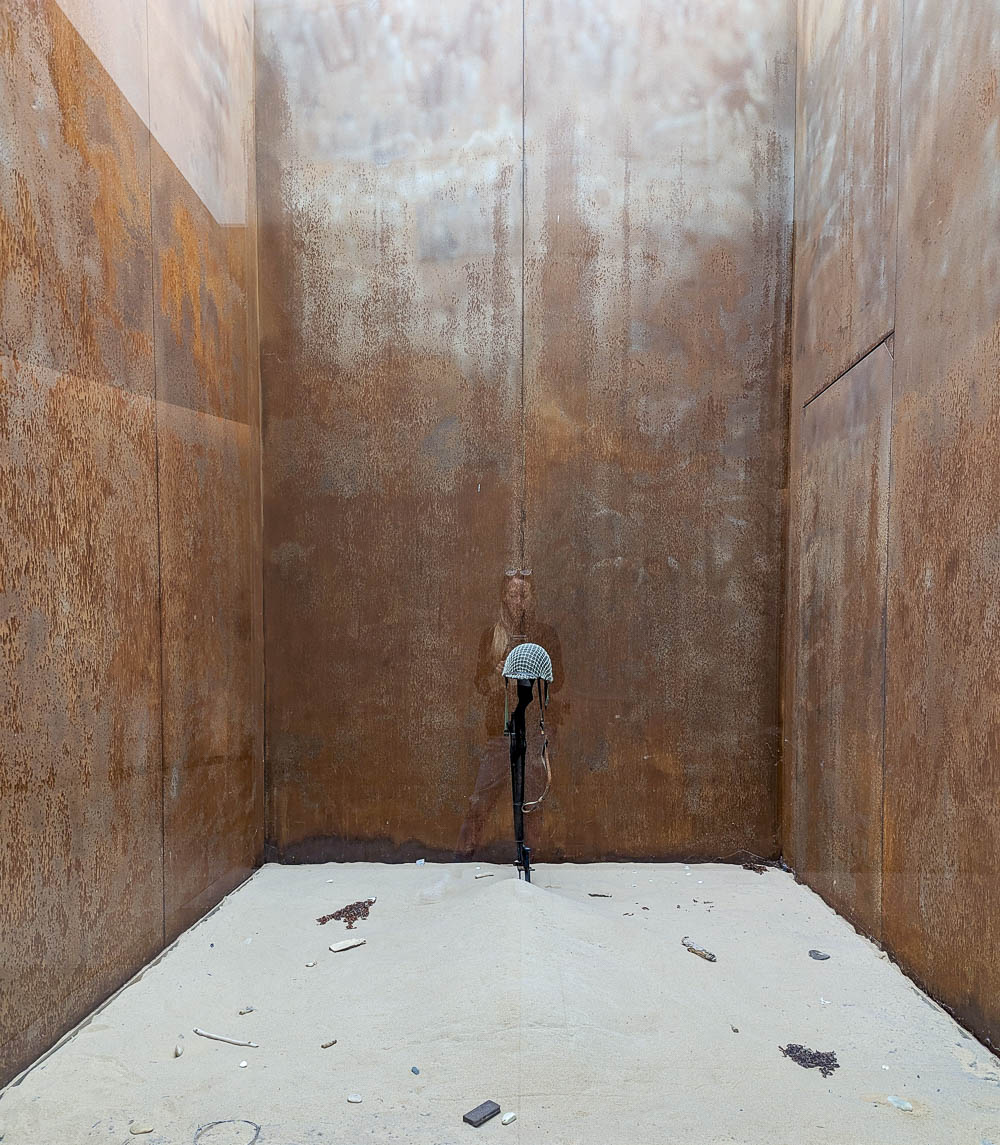
Planning a trip to Normandy? Make sure you know these 10 important things.
Map of what to see at Omaha Beach
This map contains all the Omaha Beach sites I talk about in this post. To save this map: Click on the star ⭑ next to the map’s title to save in your Google Maps. To use this map: When you get to Normandy, open Google Maps on your phone, click “Saved” at the bottom, then click “Maps.”
Also check out: What you need to know about driving in Normandy + helpful tips
1. Omaha Beach itself
Before anything else, I recommend starting your visit at Omaha Beach itself. The Normandy landing beaches remain blissfully undeveloped and you may be surprised by how incredibly vast this beach is.
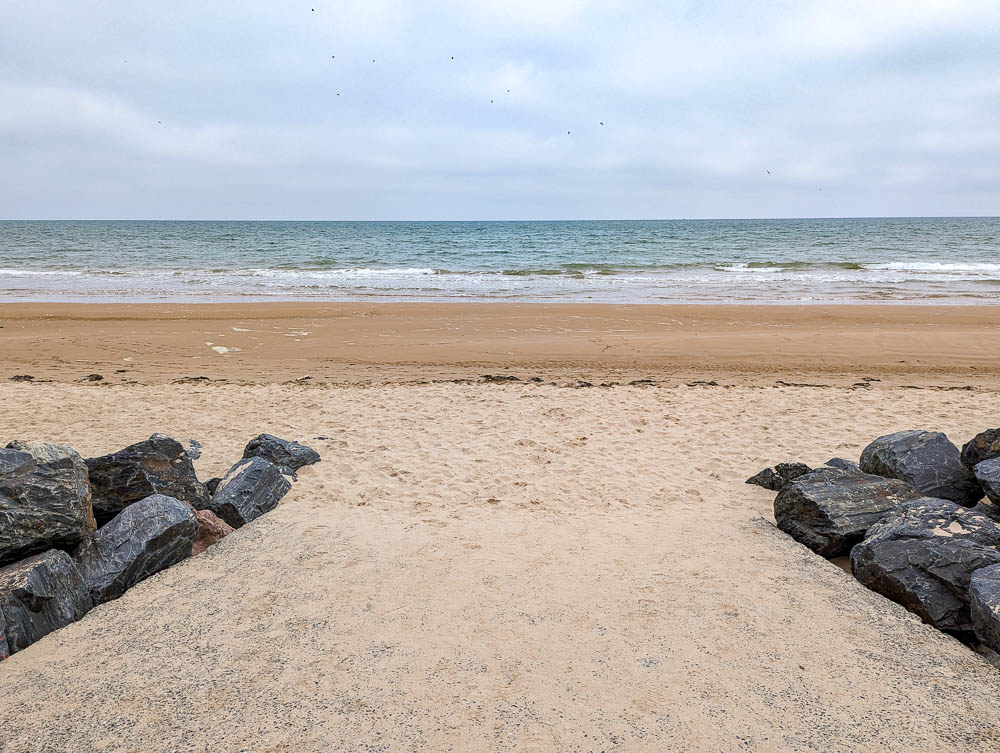
Spend some time walking the beach, thinking about the events of June 6. If you’ve seen Saving Private Ryan (and I really hope you have), it may be hard to believe that what happened here on D-Day is the same is the same place you’re looking at today. It’s chilling. Without a doubt, this is an experience you won’t soon forget.
There are two large parking lots near the main memorial area or you can park along the road all up and down beach. (Just be sure not to block driveways, not to park on private property, and only park is designated areas.)
Pro tip: Omaha Beach is the most well-known and therefore the most crowded. If you’d rather have some alone time on the beach during your visit, park at the Charles Shay Memorial instead. It’s just a short drive up from the main memorials and you’ll probably be the only soul around.
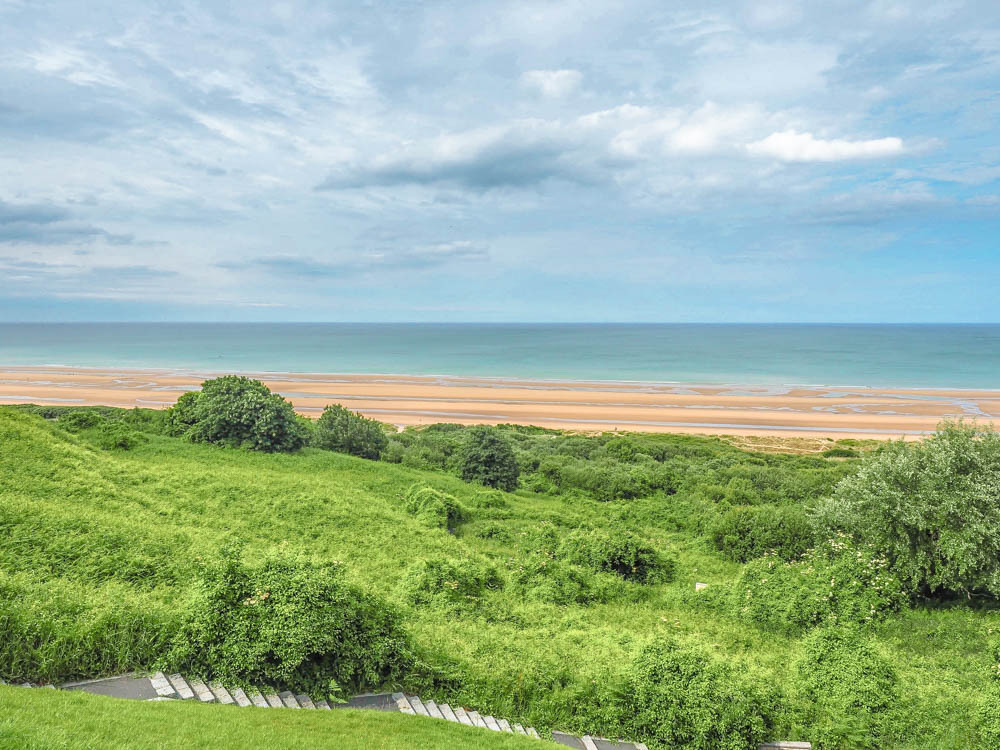

Heading to Paris before or after your Normandy trip? Don’t miss all the WWII sites in Paris too!
2. Omaha Beach Memorials
Right here in the center of the Omaha Beach landing zone you’ll find some beautiful memorials to those who fought for Europe’s liberation here on D-Day. Be sure not to miss:

3. Les Braves Memorial
The largest of the Omaha Beach memorials goes by the name of Les Braves. Artist Anilore Banon created this memorial in 2004 and dedicated it to the Allied troops who landed on Omaha Beach. You’ll notice Les Braves consists of three sections, each representing separate ideas: (in Banon’s own words)
The Wings of Hope
So that the spirit which carried these men on June 6th 1944 continues to inspire us, reminding us that together it is always possible to change the future.
Rise, Freedom!
So that the example of those who rose against barbarity, helps us remain standing strong against all forms of inhumanity.
The Wings of Fraternity
So that this surge of brotherhood always reminds us of our responsibility towards others as well as ourselves.
On June 6th 1944 these men were more than soldiers, they were our brothers.
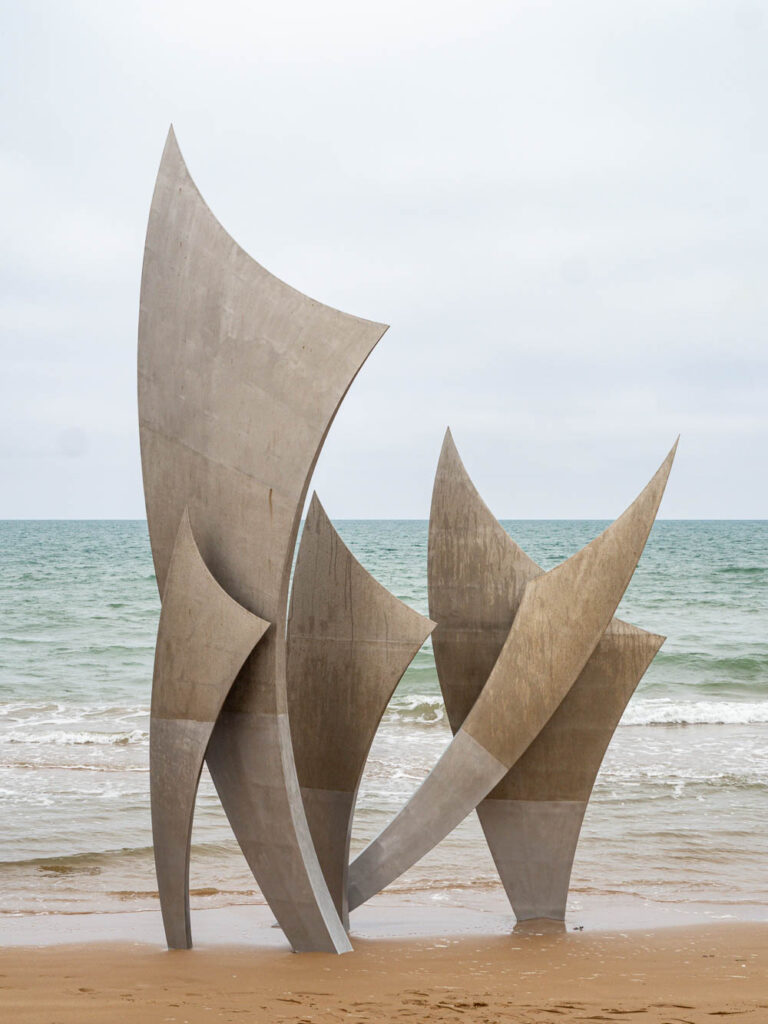
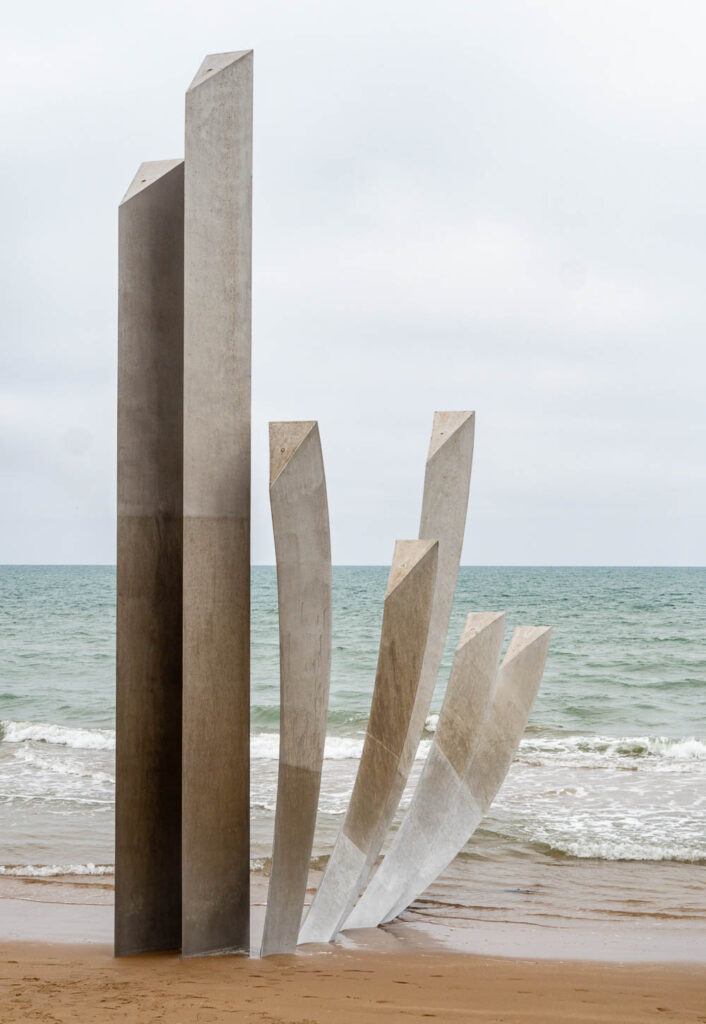
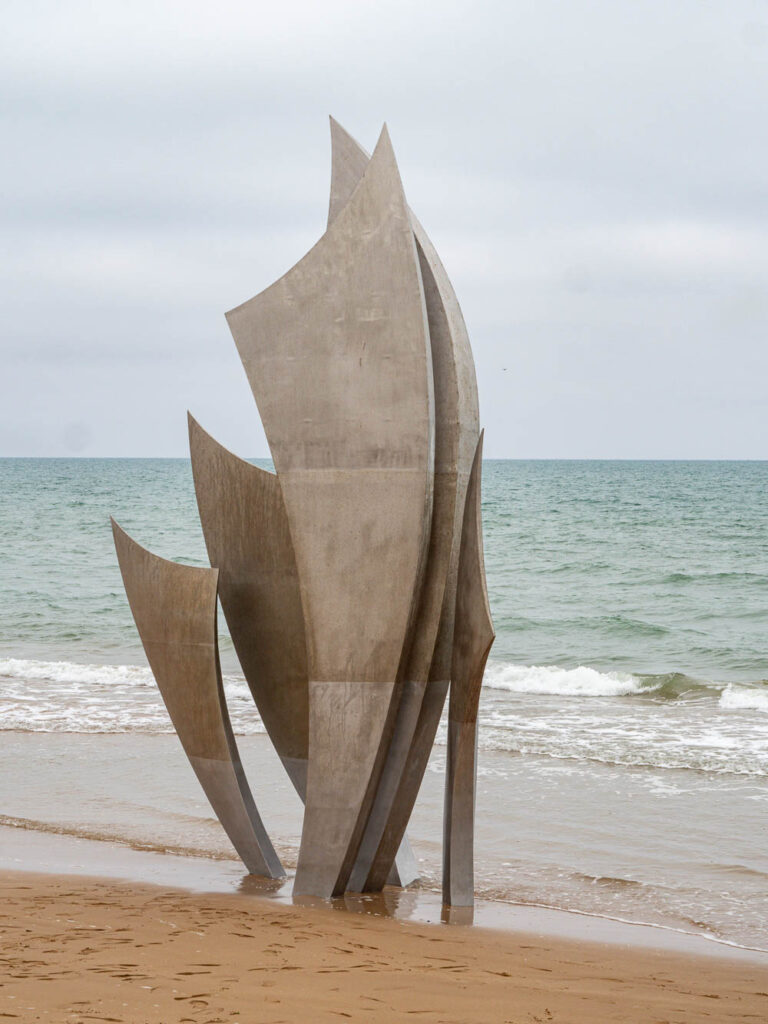

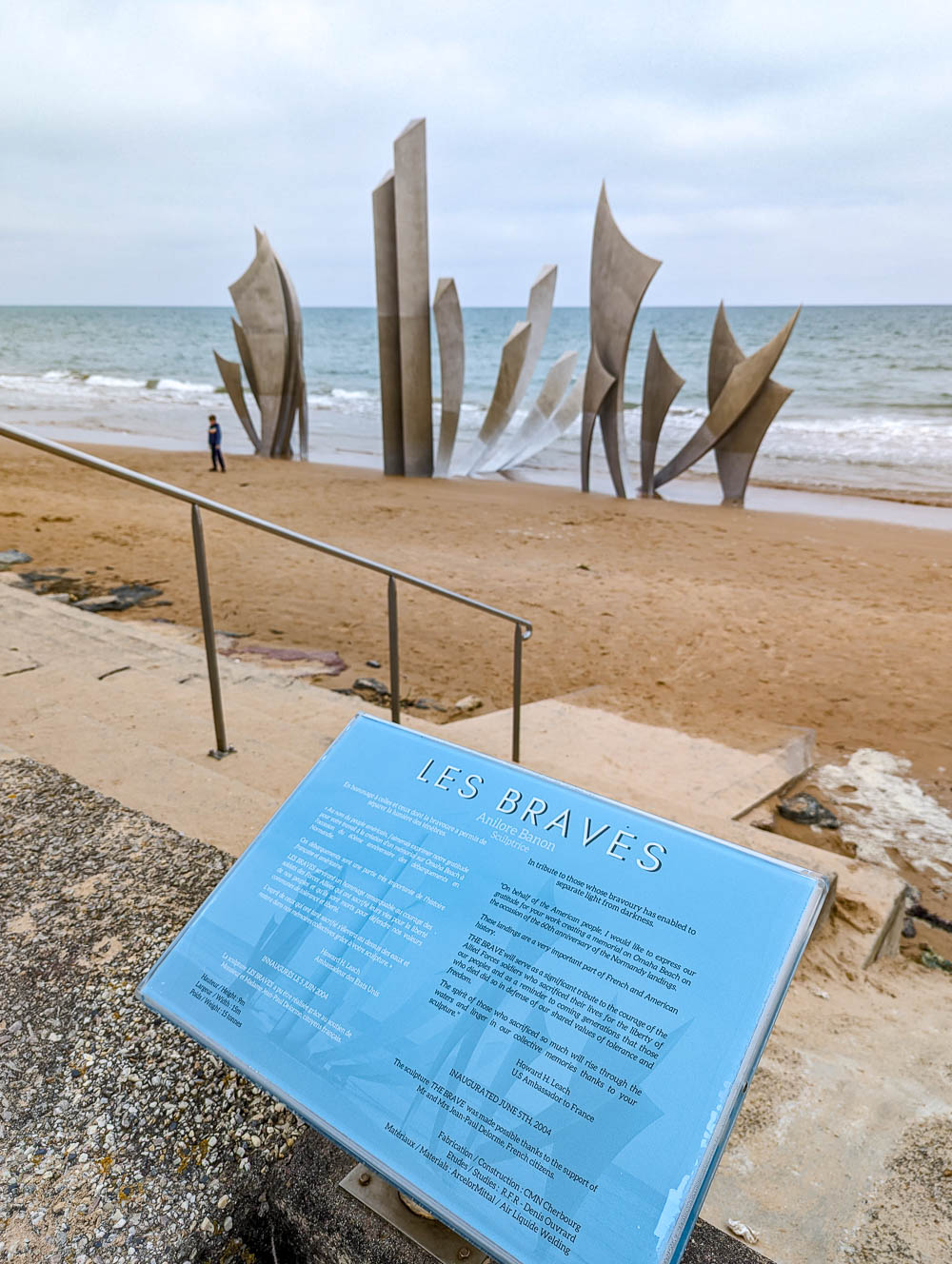
4. Signal monument Omaha Beach
Just behind the Les Braves memorial, between the beach and the parking areas, is the Signal Monument, sometimes called the Liberation Monument. The country of France dedicated this imposing stone monument to the Allied forces who landed on Omaha Beach and helped liberate it and Europe. The artist intended it to resemble the prow of a boat coming out of the water.
It has subtle engravings on each side–one dedicated to the 1st Infantry Division and the other for the 29th.
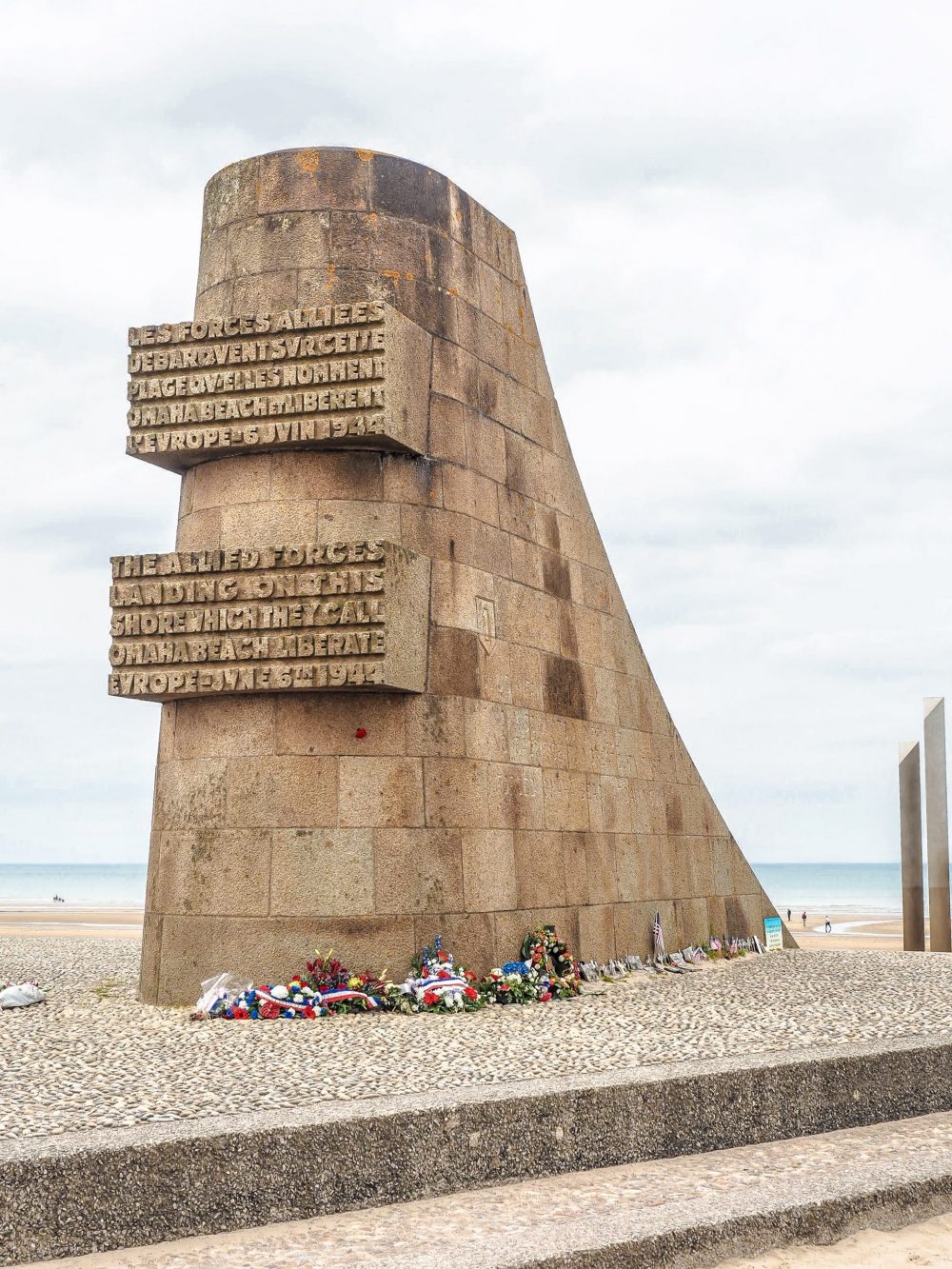
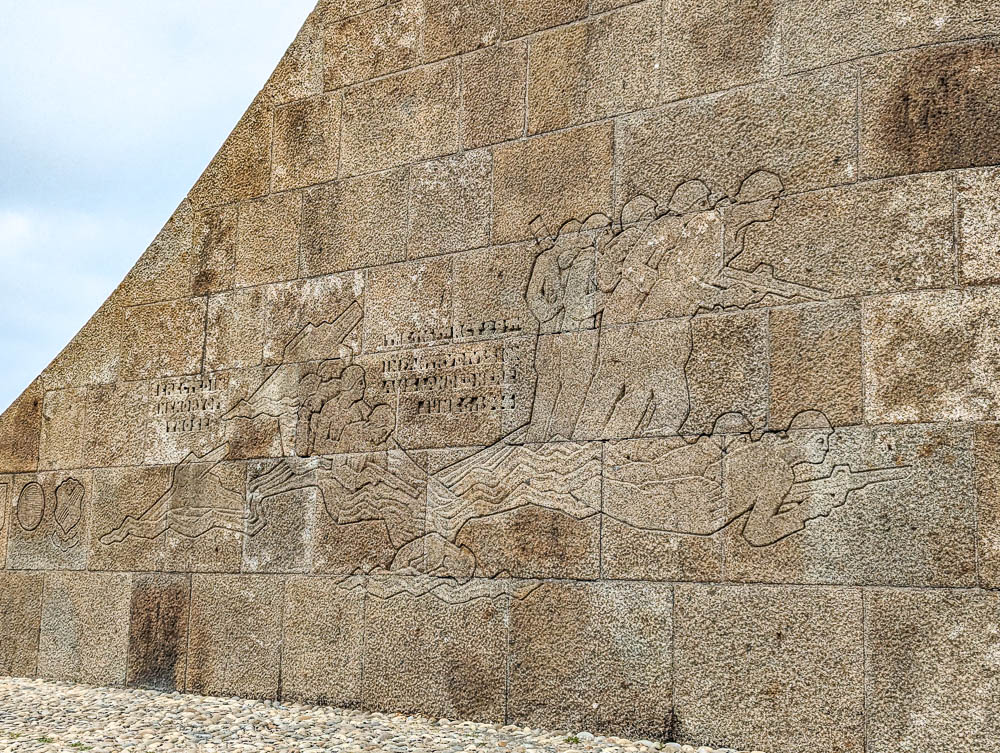
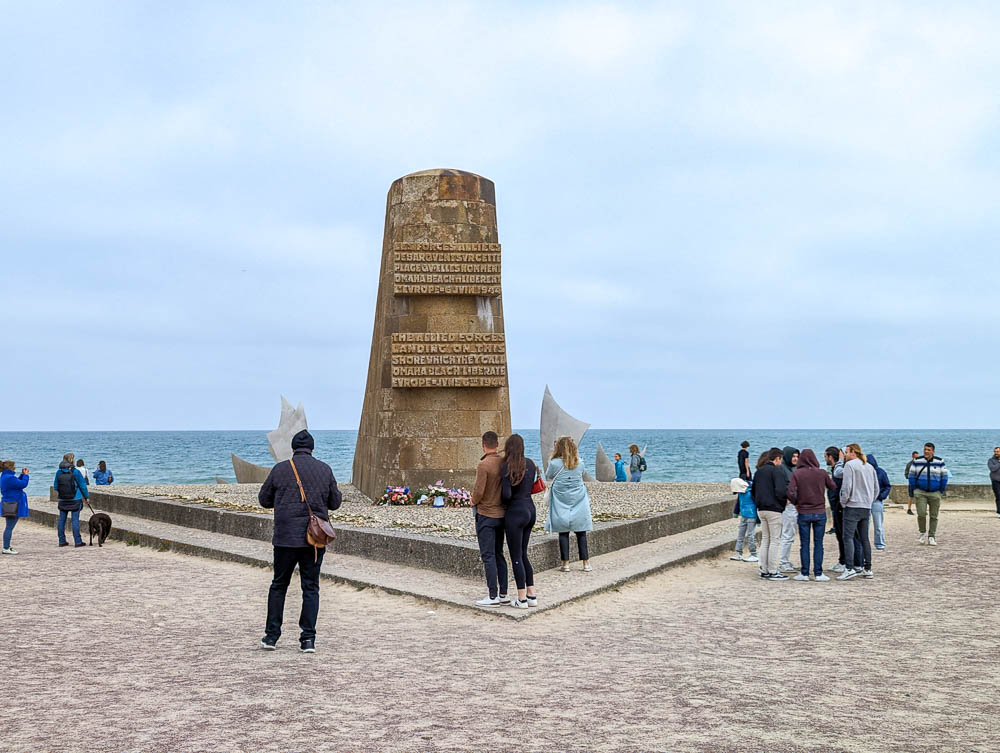
5. Charles Shay Indian Memorial
Further up the beach (eastward) you’ll find the Charles Shay Indian Memorial, dedicated to the “respectful memory of the North American Indian soldiers fallen for the liberation of France.” Unveiled in 2017, this memorial incorporates two major pieces:
Bust of Charles Norman Shay
Shay was a member of the Penobscot Indian Nation from Maine who was only 19 when he came stormed onto Omaha Beach. He was a platoon medic serving in Fox Company of the 2nd Battalion, 16th Infantry Regiment.
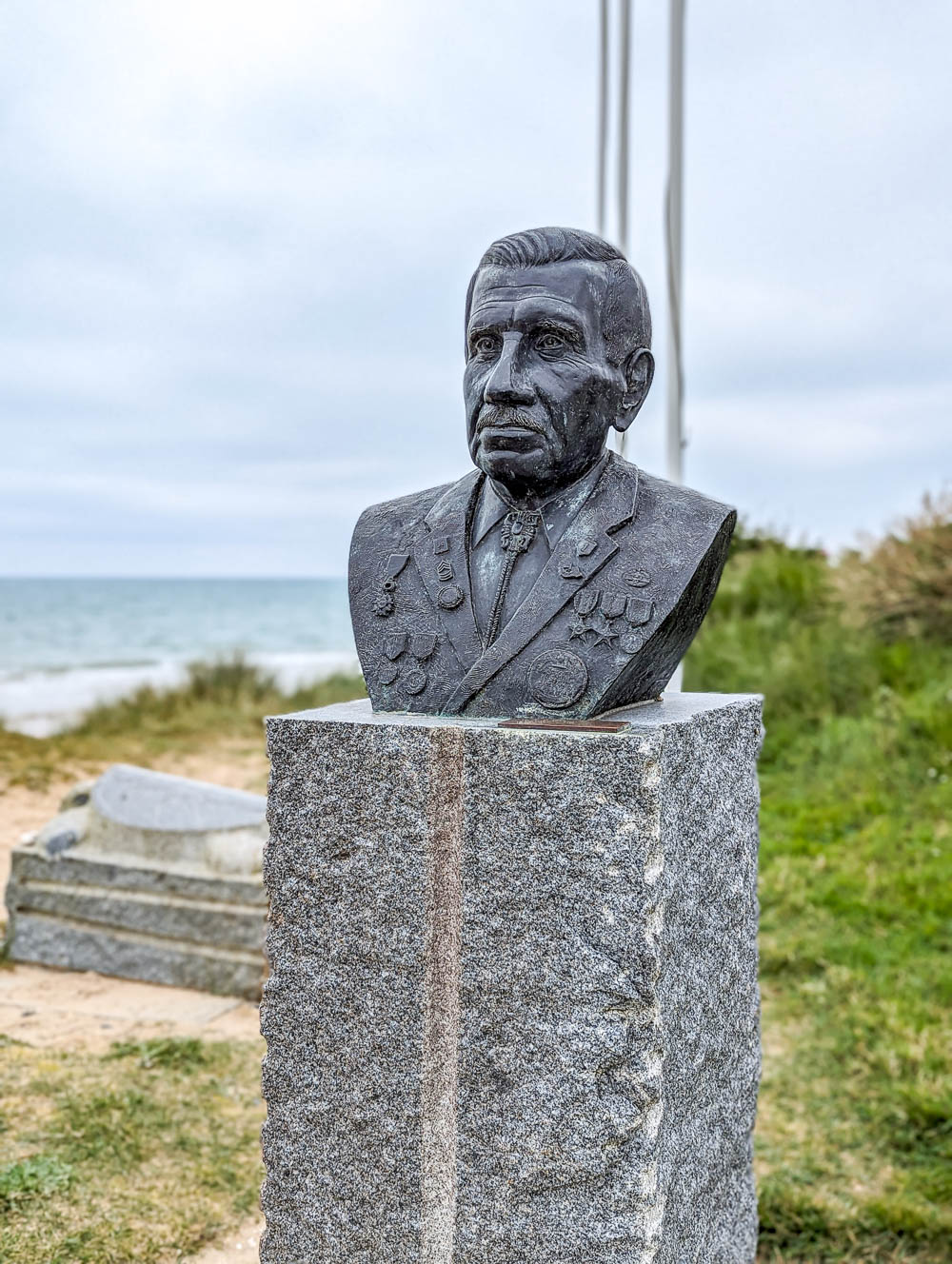
As the memorial plaque will tell you, Shay repeatedly plunged into the treacherous sea to rescue critically wounded comrades and bring them to safety under heavy fire. He continued saving wounded comrades until the war’s end and was awarded the Silver Star for his unselfish heroism on Omaha Beach.
That day, 175 American Indians landed on Omaha Beach as part of the Normandy invasion. They represented many indigenous nations including: Apache, Cahuilla, Cherokee, Chickasaw, Choctaw, Coeur d’Alene, Creek, Kumeyaay, Lakota, Lummi, Navajo, Nez Perce, Onondaga, Otoe, Passamaquoddy, Potawatomie, Seneca, Tuscarora, Wampanoag, and Yuchi. This memorial also tells the story of four other American Indian riflemen.
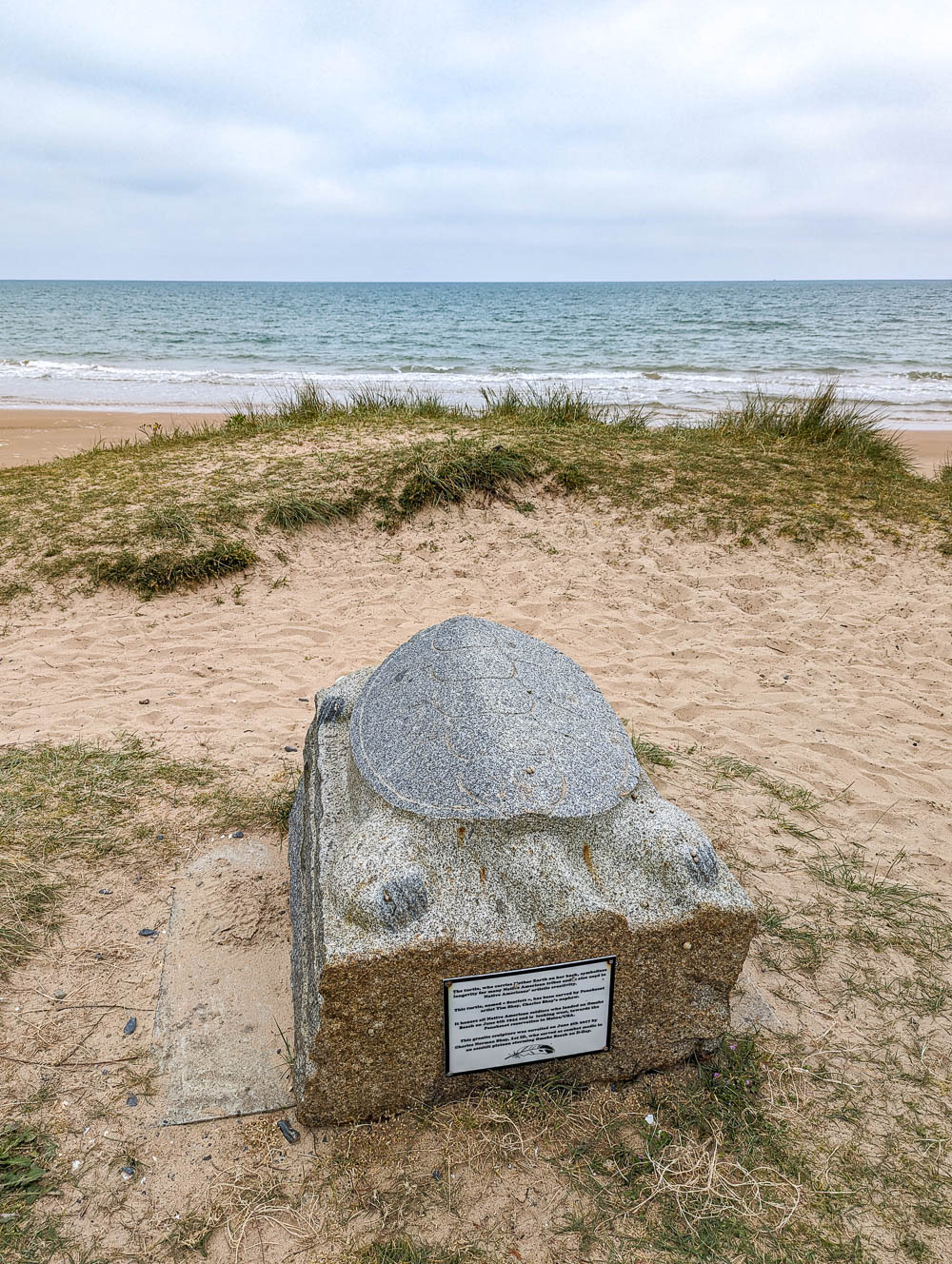
Sculpture of a turtle
A powerful symbol to the people of Penobscot Nation and personally to Shay. As the memorial states, the turtle “carries Mother Earth on her back” and “symbolizes longevity for many Native American tribes.” Many indigenous peoples, Shay included, refer to North America as “Turtle Island.”
This particular turtle sculpture was carved by Tim Shay, Charles Shay’s nephew. It faces west towards the Penobscot reservation in Maine.
There’s a small parking area just as you reach the location of the memorial off the main road.
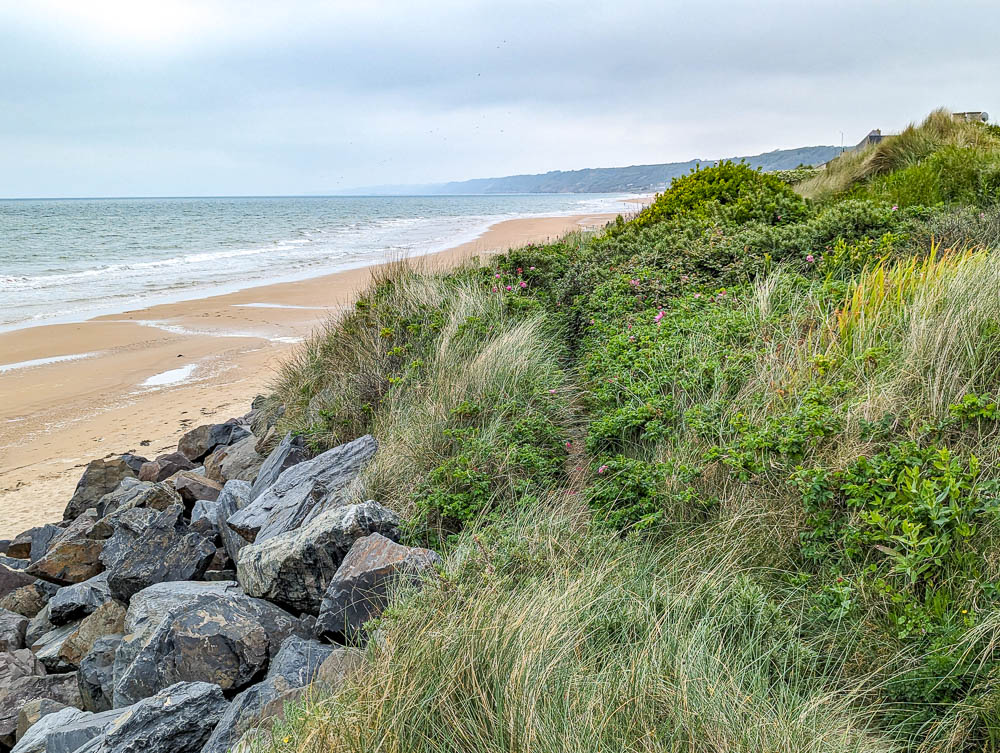
6. Croix de Guerre 5th Engineer Special Brigade Memorial
Even further east along Omaha Beach is the 5th Engineer Special Brigade Memorial. The US Army 5th Engineer Special Brigade was one of the amphibious forces that stormed Omaha Beach on D-Day, specifically the eastern beaches of Easy Red, Fox Red, and Fox Green.
The 5th Engineer Special Brigade controlled Omaha Beach from D-Day until its closing on November 19, 1944. This black stone monument pays tribute to the these troops and overlooks the eastern sector of Omaha Beach.

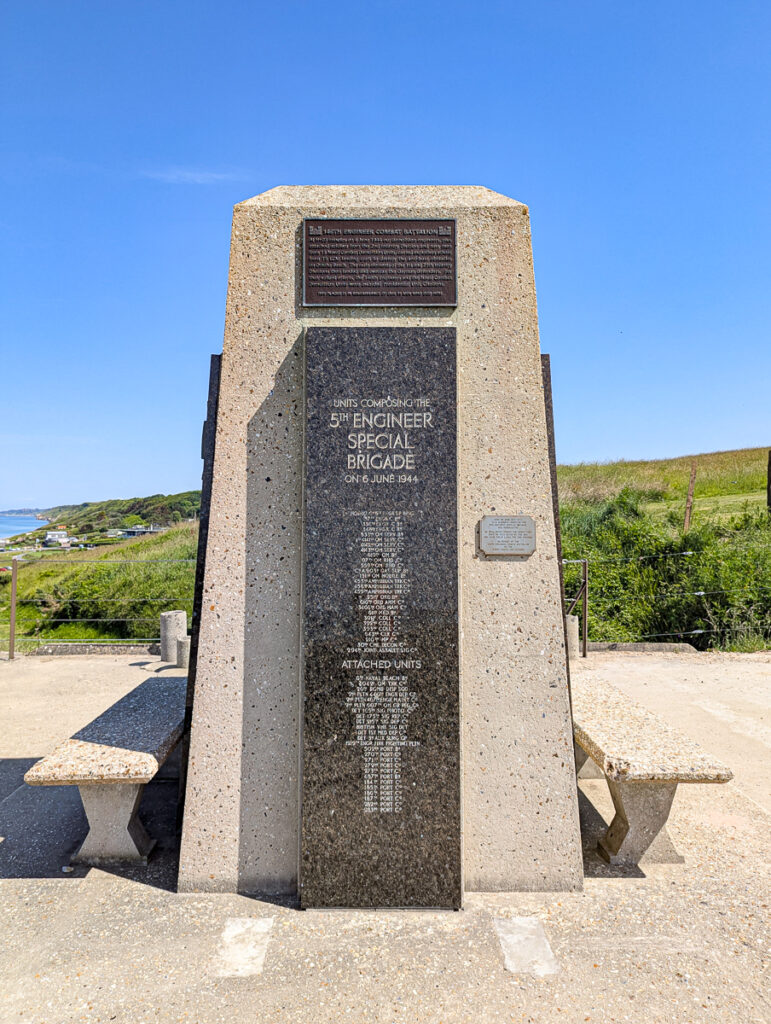
7. Big Red One Denkmal
The monument known as the “Big Red One Denkmal” is a tall, narrow, pyramidal shaped monument dedicated to the men of the US 1st Infantry Division. This unit was also known as the “Big Red One.”
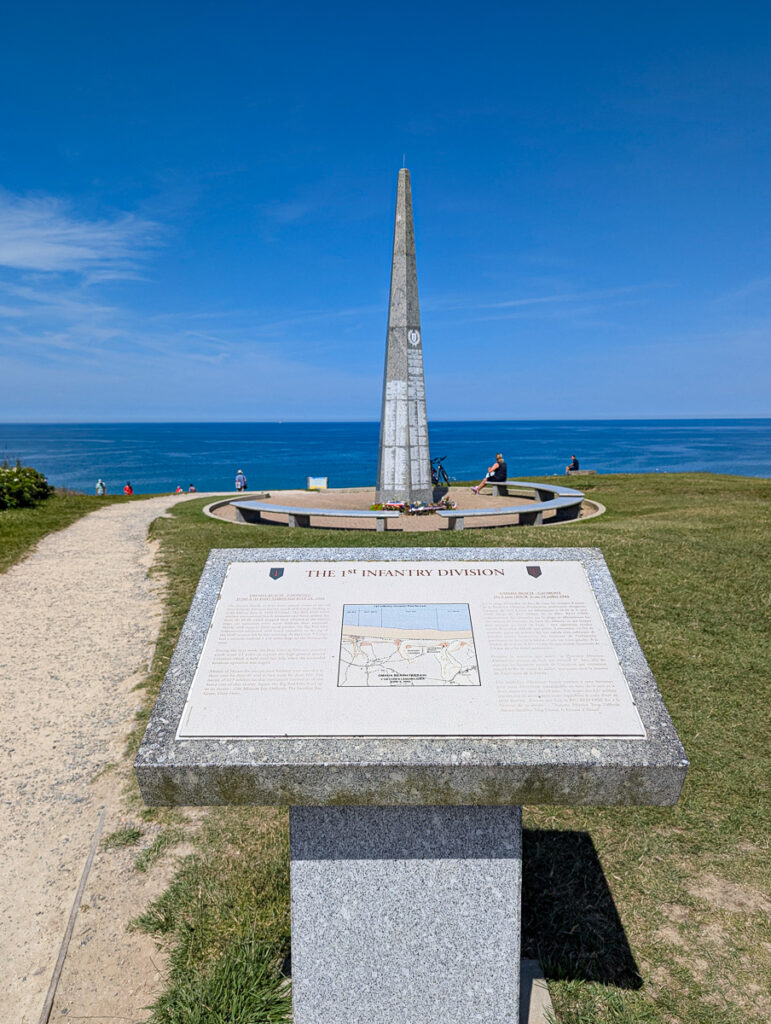
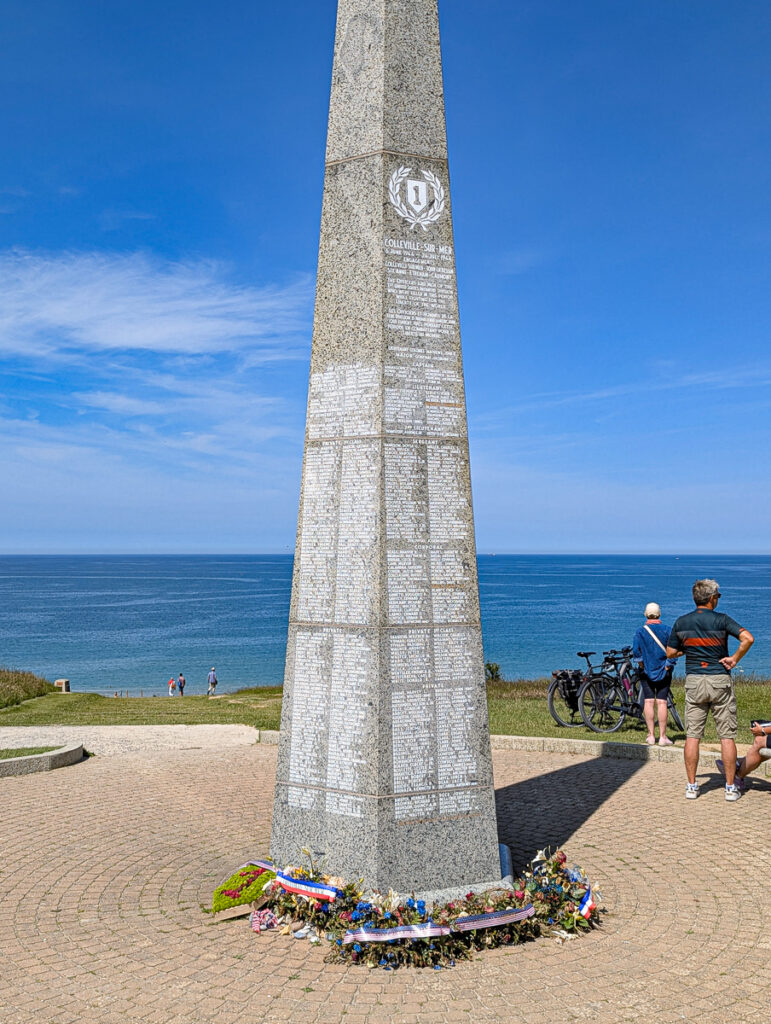
8. Combat Medics 16th Infantry Memorial
As one of the more unique Omaha Beach memorials, this one is actually located on a rock within the tidal zone. So, access to it will vary depending on what time of day you visit.
This carved black memorial plaque is attached to a large rock that served as the first casualty collection point at Omaha Beach. It’s dedicated to the combat medics of the 1st Infantry Division’s 16th Infantry Regiment who placed their lives on the line to save their comrades on D-Day.
Important Note: To visit the previous three monuments, you’ll need to leave the main beach area and drive around to where these are specifically. These are closer to and just past the Normandy American Cemetery. You can park at the cemetery and walk to them or drive a little further and you’ll find a designated parking area.
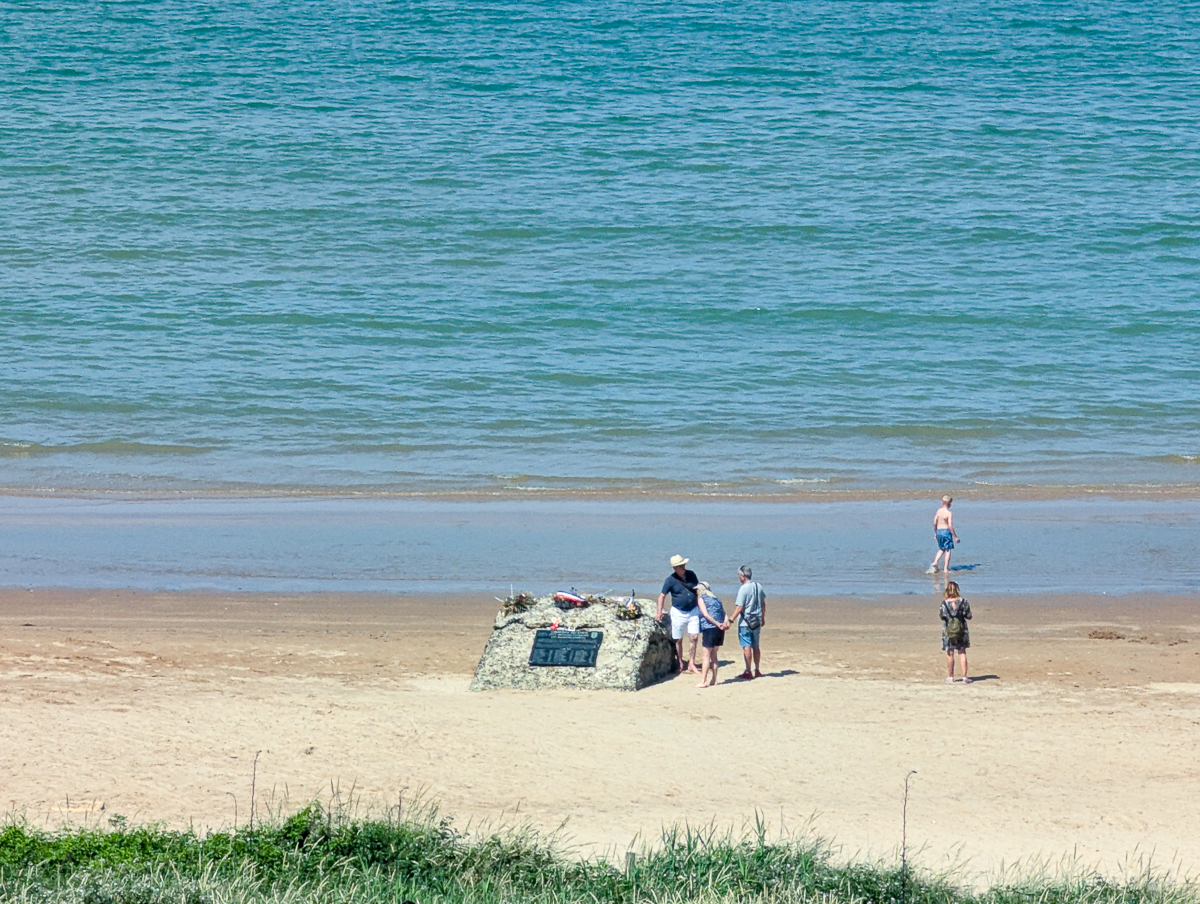
9. Ever Forward Monument
A little farther north up Omaha Beach you’ll find another memorial area. At the center is the Ever Forward Monument dedicated to the men of the 29th Division’s 116th Infantry Regimental Combat Team. The memorial consists of two infantrymen appearing to storm Omaha Beach on D-Day.
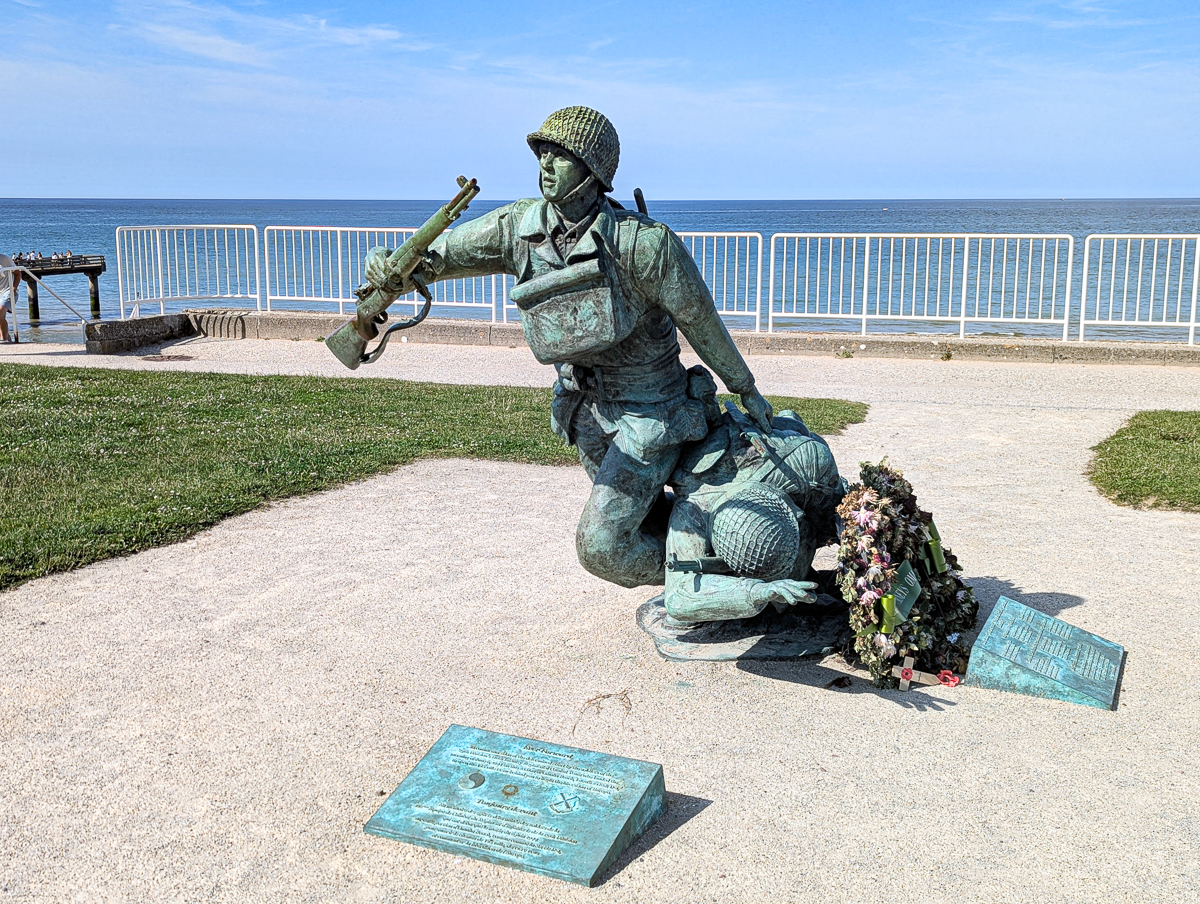
10. National Guard Association Monument
The largest monument in this area is that of the National Guard Association. This monument to the 29th National Guard Division sits atop a German bunker which houses an 88mm cannon that you can still see today from the backside.
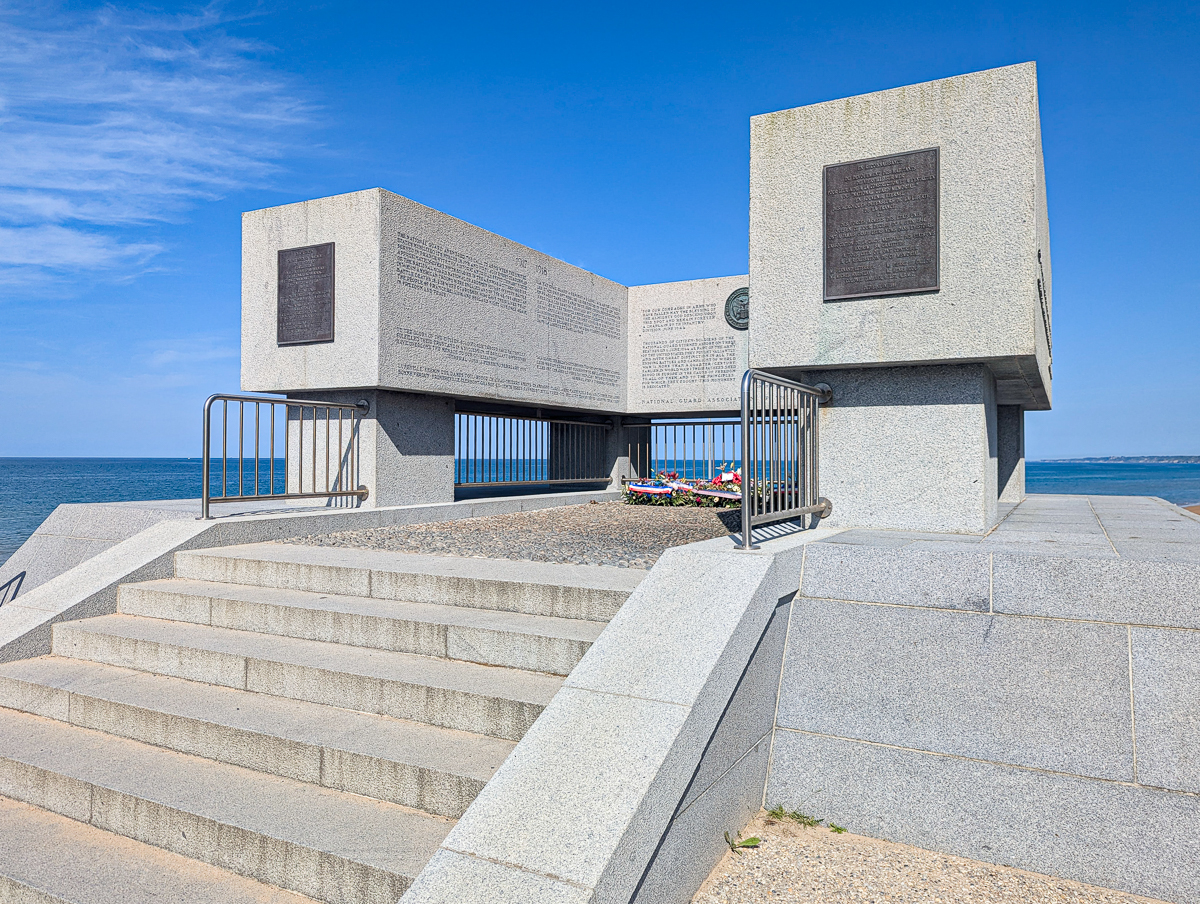
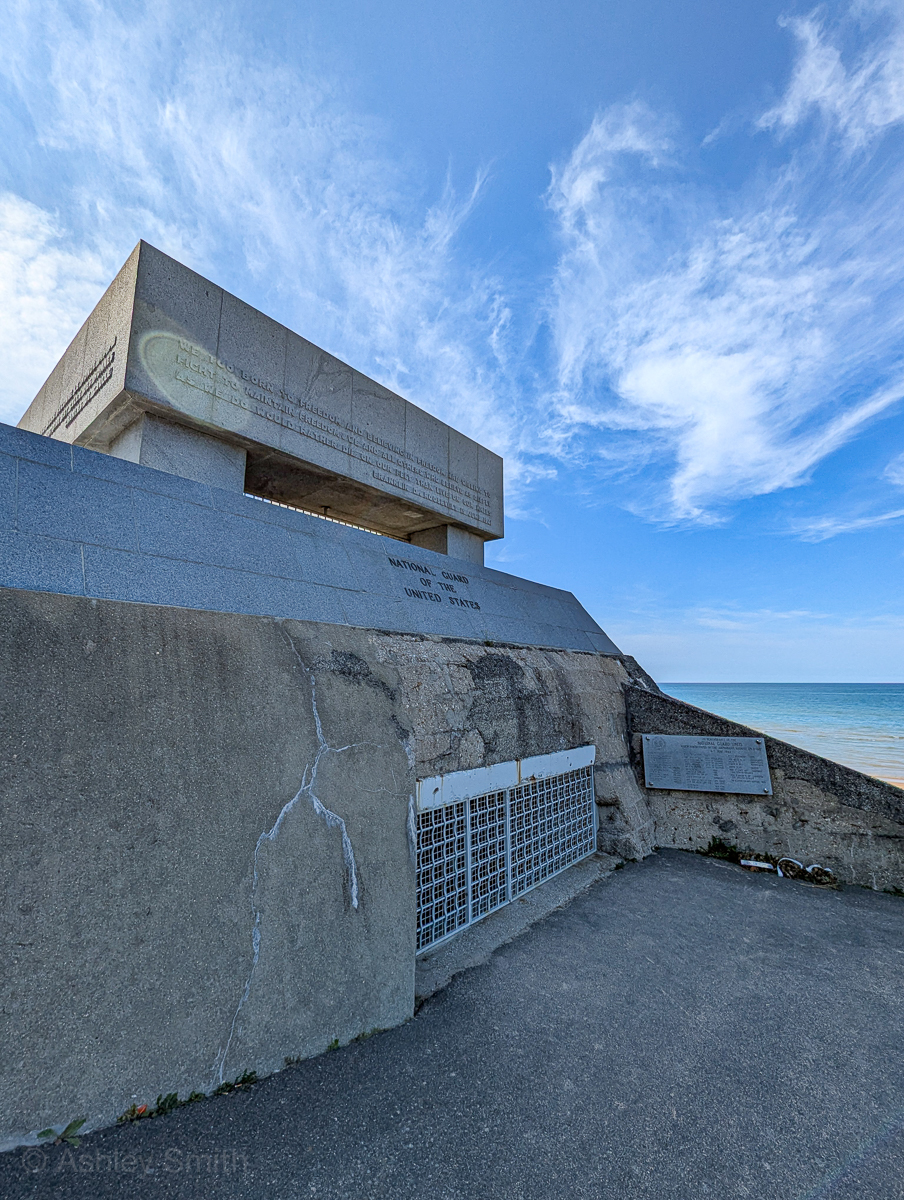
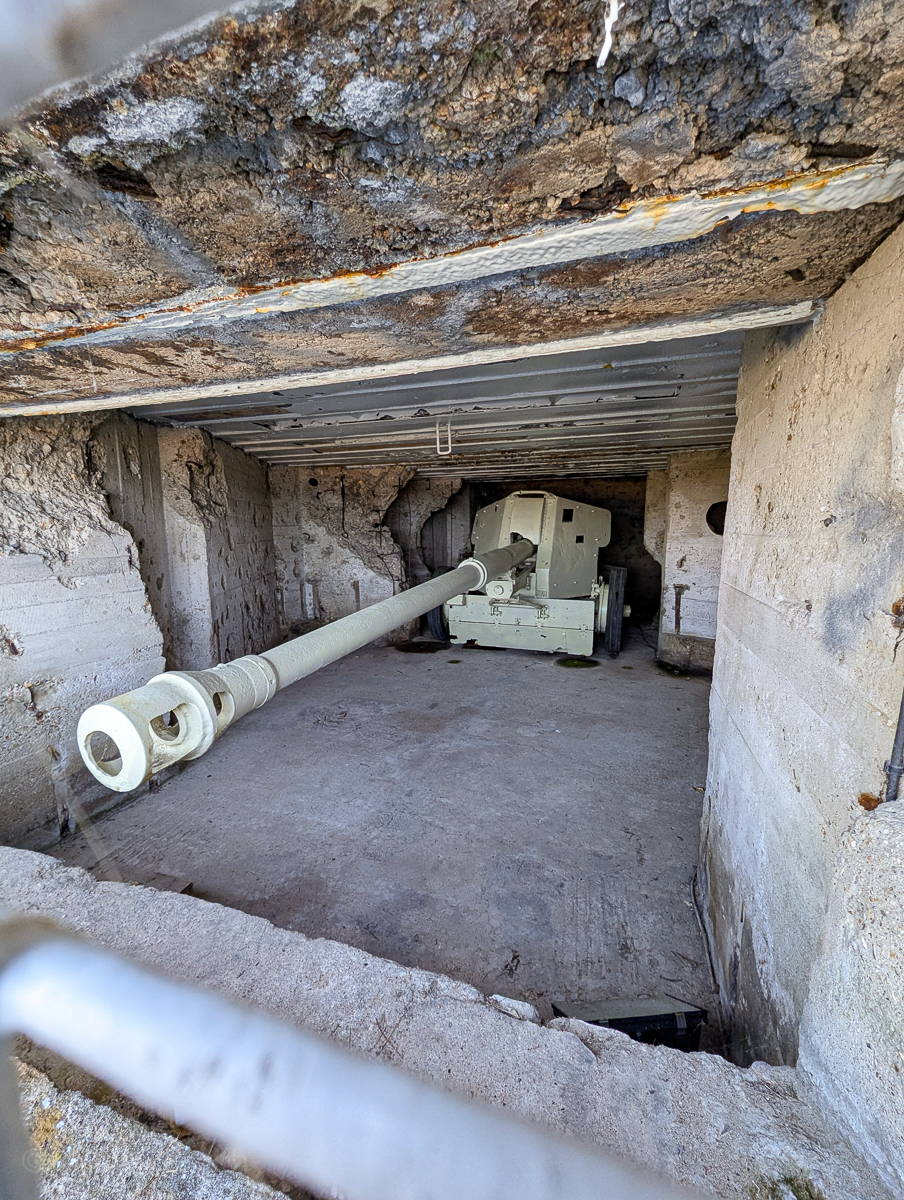
11. Royal Air Force Memorial
Next to the Ever Forward sculpture is the memorial to the Royal Air Force. Even though Omaha Beach was technically a US landing zone, the Americans weren’t alone. This monument is dedicated to:
The gallant radio and radar technicians of the 2nd Tactical Air Force who landed on Omaha Beach on D-Day to provide ground controlled radar protection for the American beachhead.

12. Memorial Museum of Omaha Beach
Just up the road from the Les Braves and Signal monuments you’ll find the Memorial Museum of Omaha Beach. You can take self-guided tours of this museum which is dedicated to the memory of all the young men who died on D-Day.
The Omaha Beach Memorial Museum leads you through all the phases from Nazi occupation to D-Day. It utilizes archival photographs, personal artifacts, veterans’ testimonies, and more to tell these stories. You can view tanks, weaponry, a Higgins boat, and many personal effects showcased in lifelike displays.
This museum is just a 5-minute walk from the beach monuments and is impossible to miss. (And if you don’t have time for a visit, you can still check out many of the artifacts in the parking lot.)
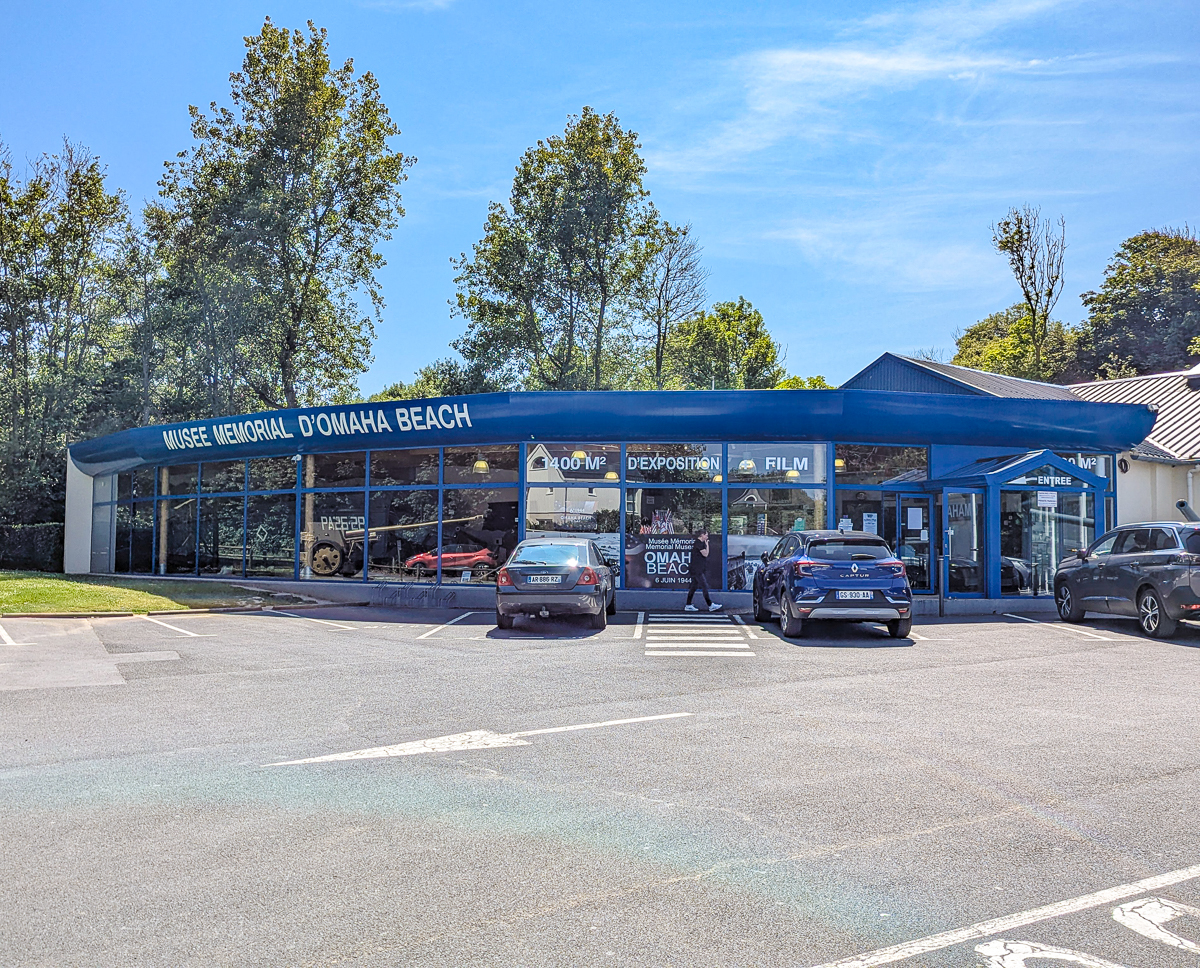
If you’re a fan of museums like me, you might also like my post on these other awesome WWII museums in Normandy to check out while you’re here. This list includes museums from all the Normandy landing sectors.
13. D-Day Omaha Museum
You can find the D-Day Omaha Museum between two of the most popular D-Day sites in this area: Normandy American Cemetery and Pointe du Hoc. This museum is located inside an original quonset hut. It was originally used for storing equipment during the beach landings but was eventually turned into a field hospital. The collection inside is brought to you by a massive private collection of thousands of artifacts.
The D-Day Omaha Museum focuses on the D-Day landings and showcases such artifacts as weaponry, an Enigma machine, vehicles, and a set of restored Mulberry footbridges. This museum is small but a great stop for any D-Day enthusiast.
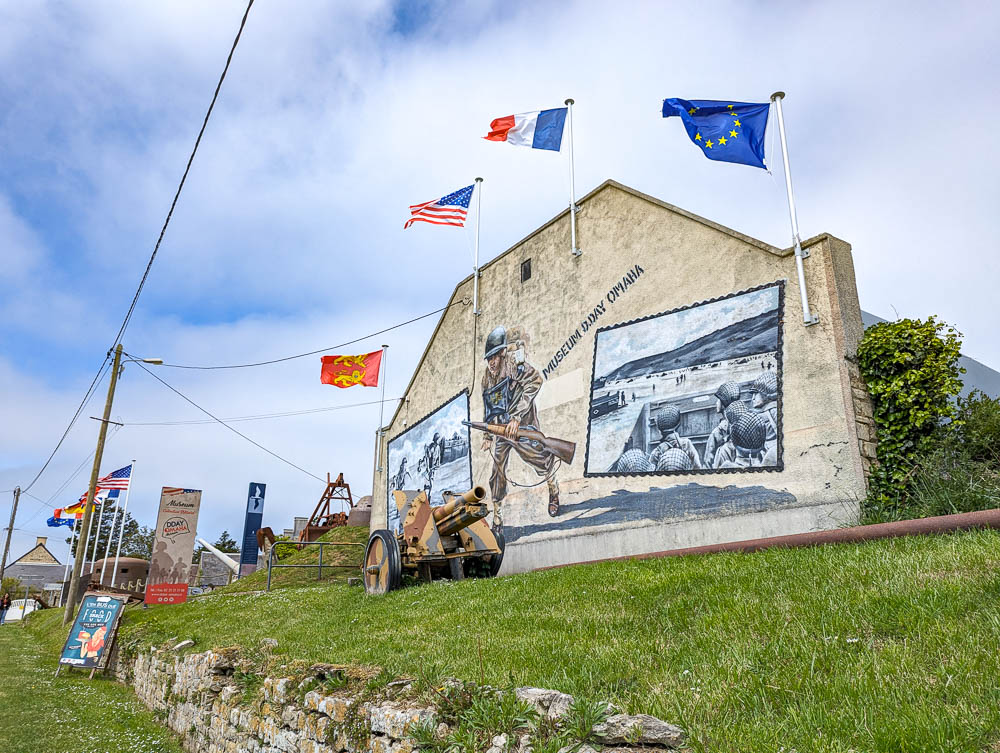

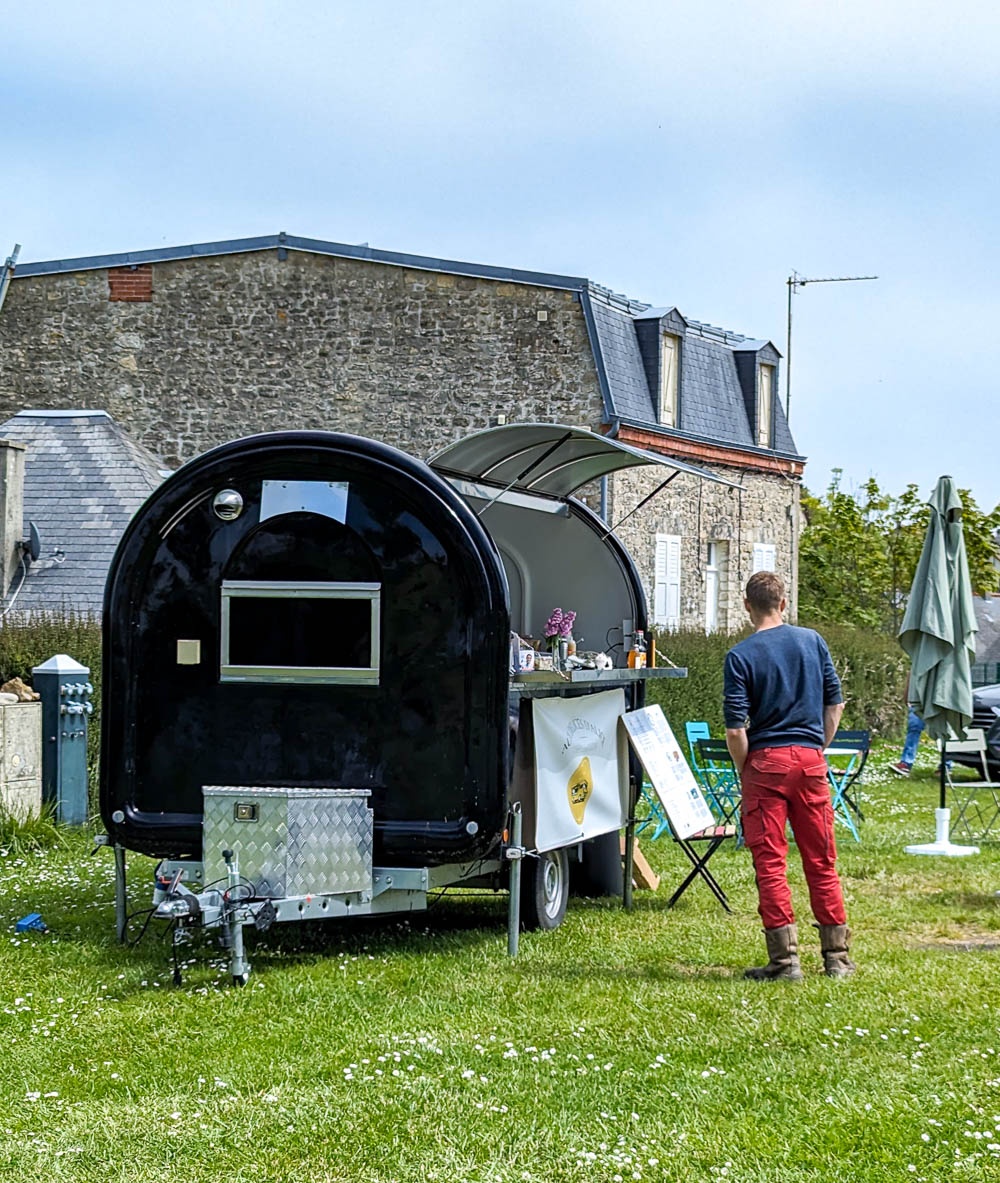
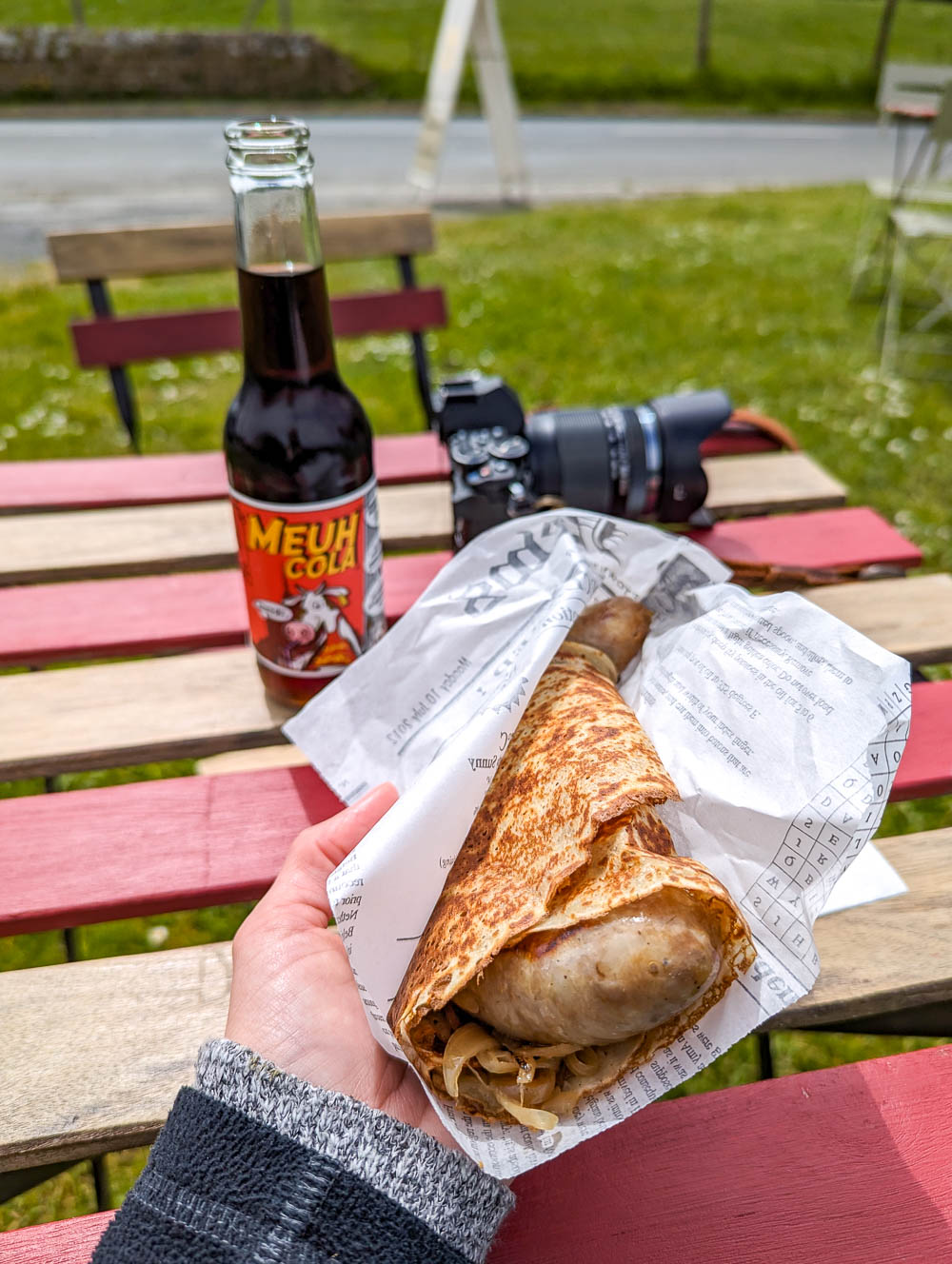
Pro tip: Skip the on-site concession stand at the D-Day Omaha Museum and walk three minutes down the road to the food truck called Aux DÉLICES d’Alice (marked on the map at the top of this post). This little trailer is run by two lovely women and the sausage and onion crepe I had here is one of my absolute favorite meals in Normandy. (All ingredients come from the local farm.)
14. Normandy American Cemetery
A little bit inland but overlooking Omaha Beach is Normandy American Cemetery. This astoundingly beautiful cemetery serves as the final resting place for 9,387 U.S. soldiers, most of whom were victims of the D-Day landings and subsequent battles. You can also find the names of 1,557 soldiers on the Walls of the Missing dedicated to those missing in action.
The US First Army established the Normandy American Cemetery on June 8, 1944 at the site of the temporary American St. Laurent Cemetery. The country of France granted the land to the United States which is considered official American soil.
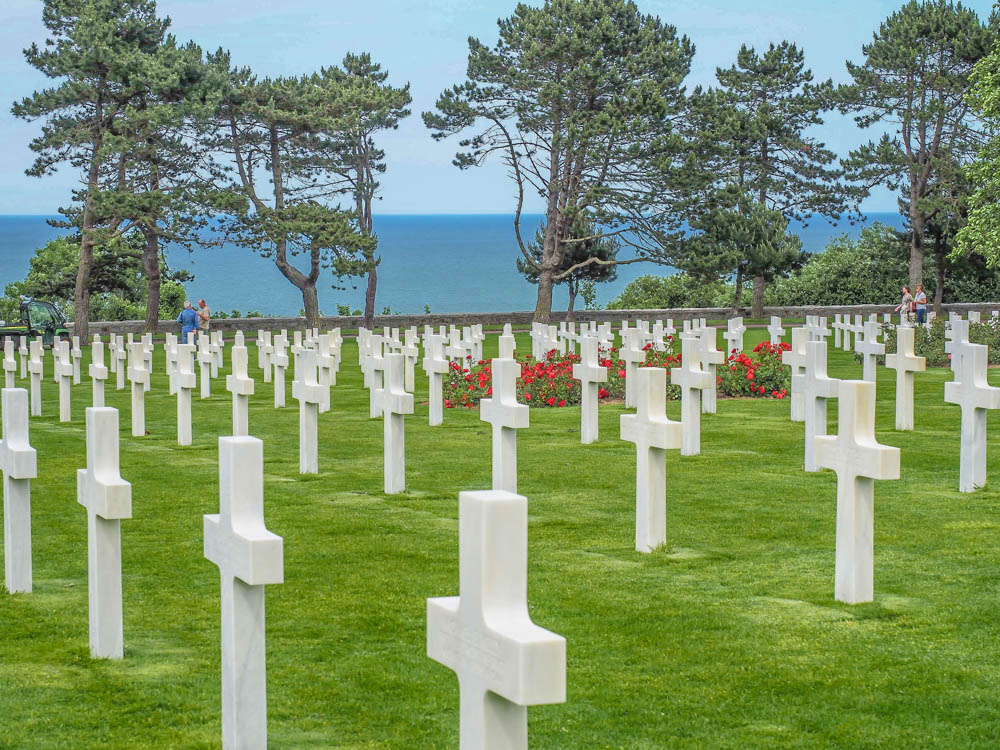
What to see at Normandy American Cemetery
Normandy American Cemetery features:
- A $30 million visitor center with informative exhibits and three films
- A semi-circular colonnade with huge maps that visually explain the military operations of D-Day
- The bronze statue of “Spirit of American Youth Rising from the Waves”
- An orientation table overlooking the beach that depicts the landings
- A reflecting pool
- A small chapel
- The Walls of the Missing
- The actual cemetery, beautiful tree-lined walking paths, and more

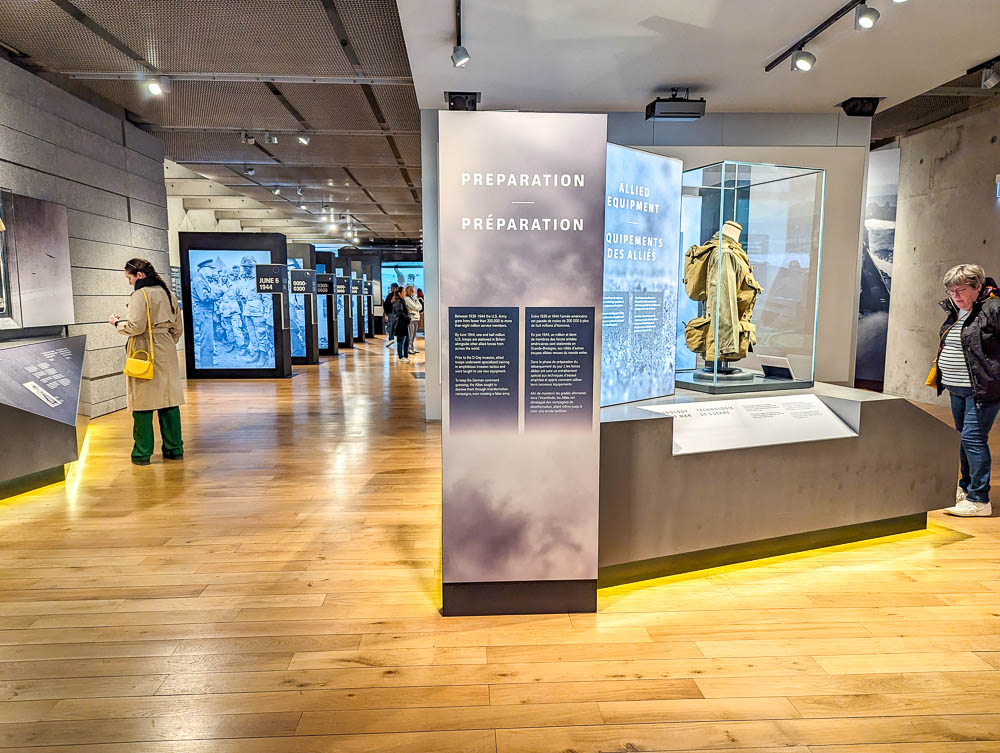
A visit to Normandy American Cemetery is a surreal and emotional experience. It’s both idyllic and overwhelming but absolutely worth a stop. Be sure not to pass up the visitor center–the exhibits inside are really well done.
You may remember this cemetery from both the beginning and end scenes of Saving Private Ryan. Two of the real-life brothers behind that story are also buried here—Robert and Preston Niland. For more on Normandy American Cemetery, check out my post on the best D-Day sites in Normandy.
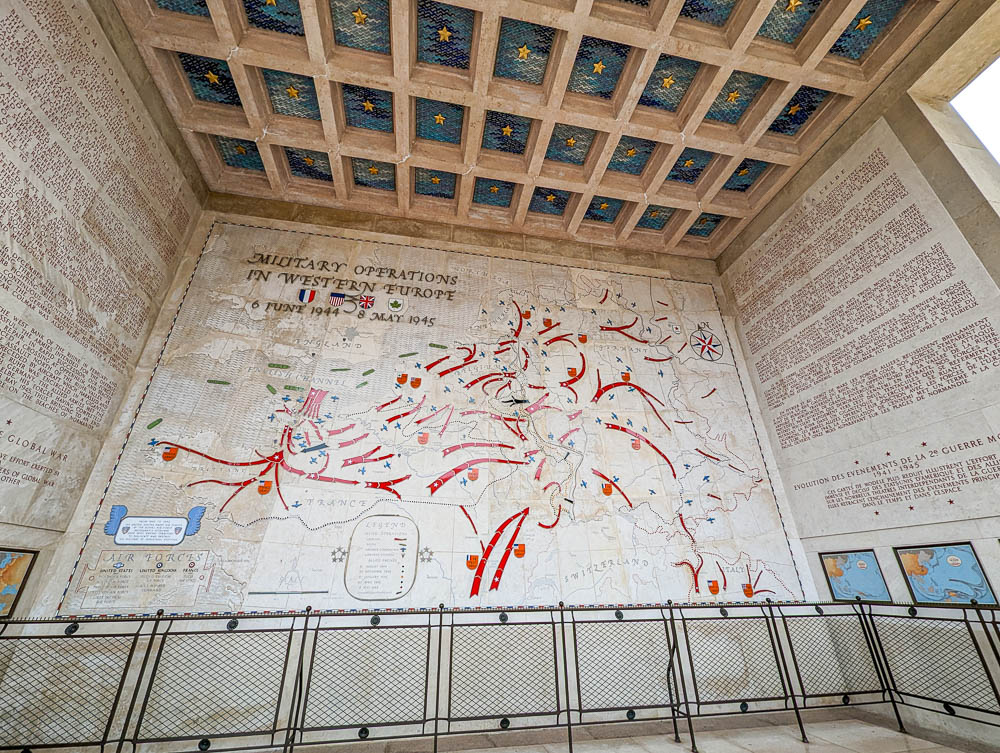
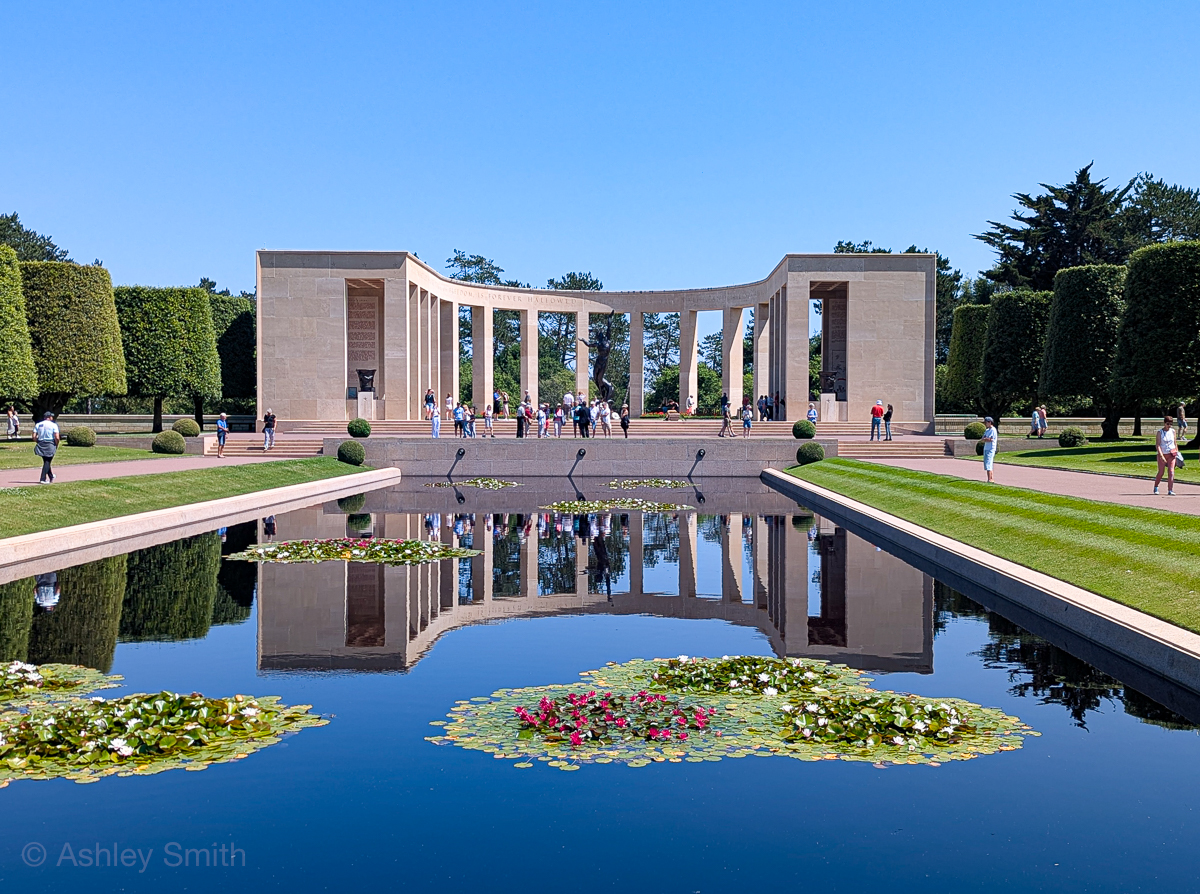

15. Original American Cemetery Marker
Heading west from the main Omaha Beach memorials you can see the memorial marker denoting the original location of the first American cemetery. Normandy American Cemetery as we know it wasn’t completed until 1956. Before the process of moving the dead began, this area served as the temporary American cemetery.
Many of Omaha Beach’s sites are visited on the best local D-Day tours and the best day tours of Normandy from Paris. Check them out in that link if you’d like to go that route.
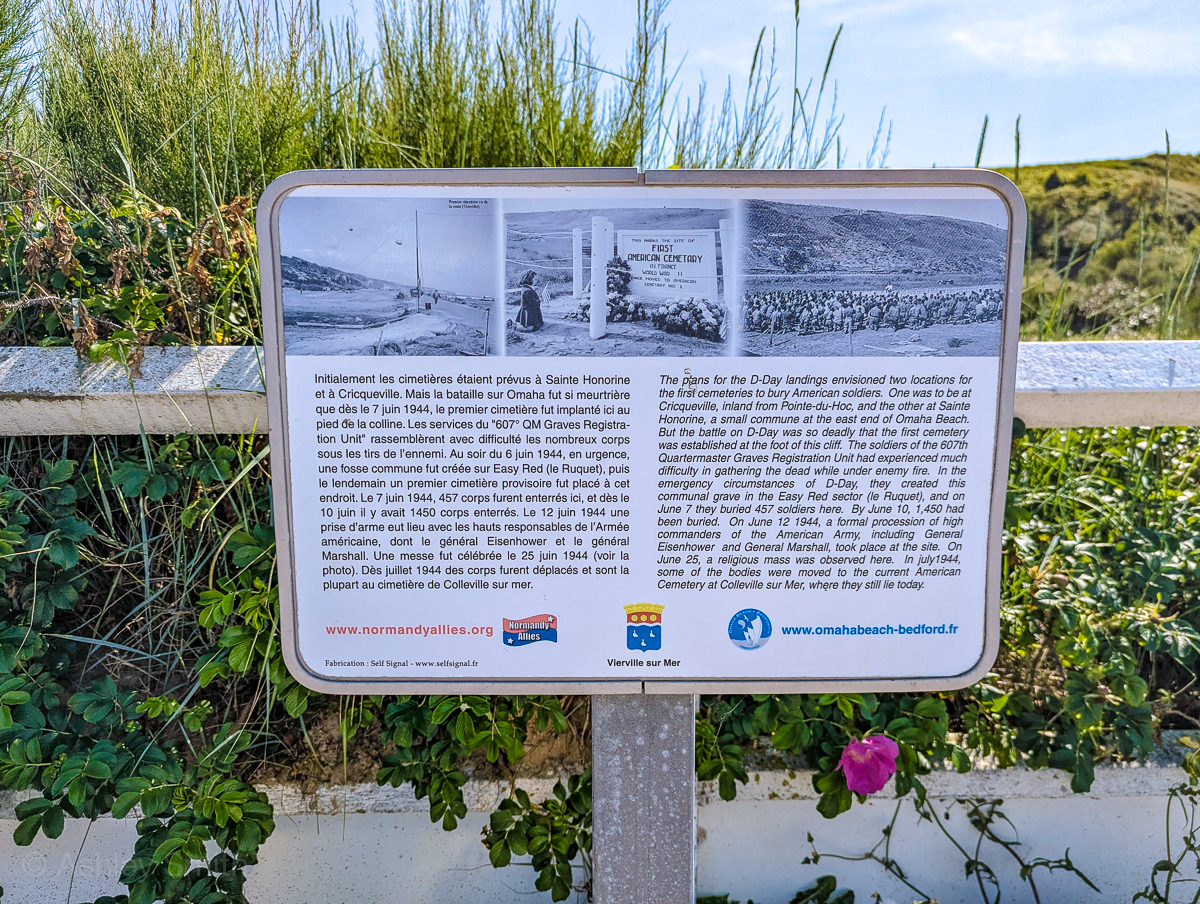
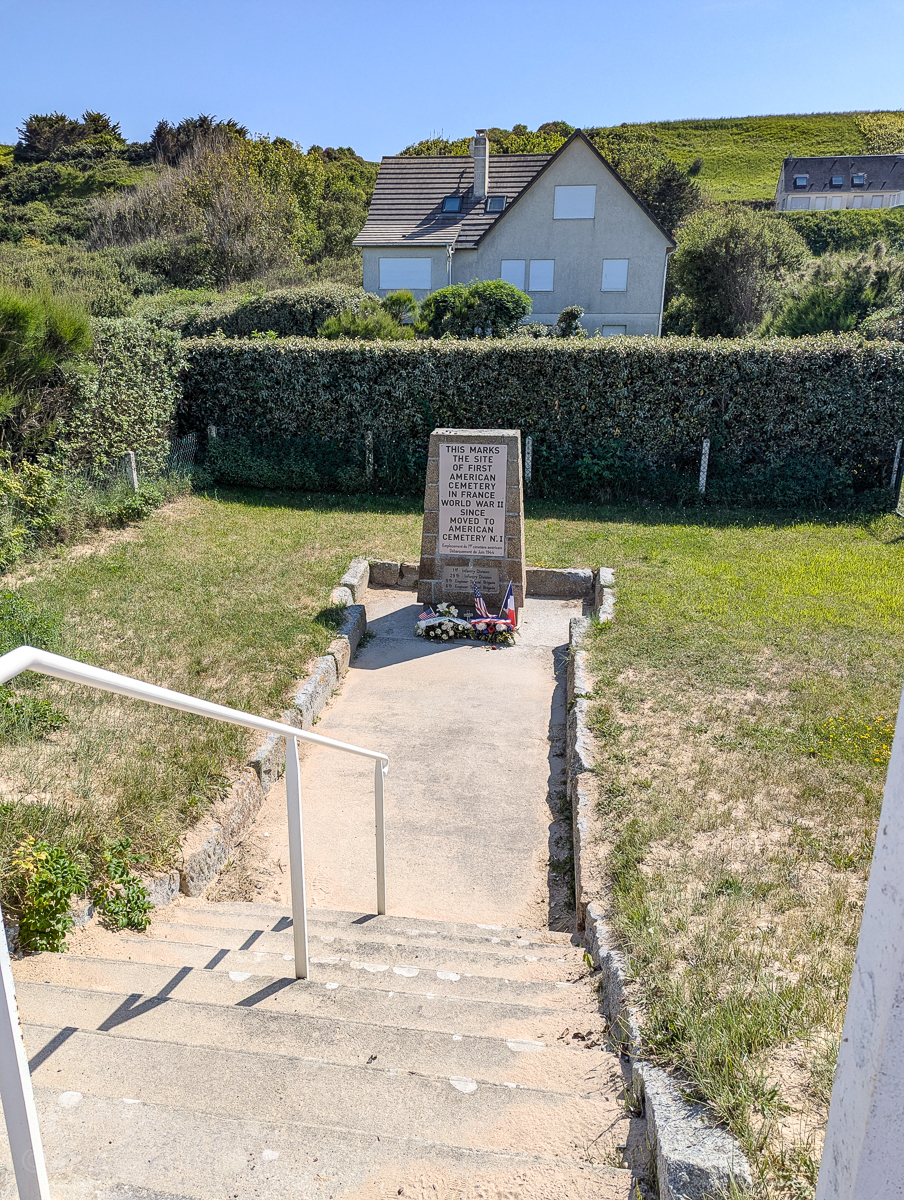
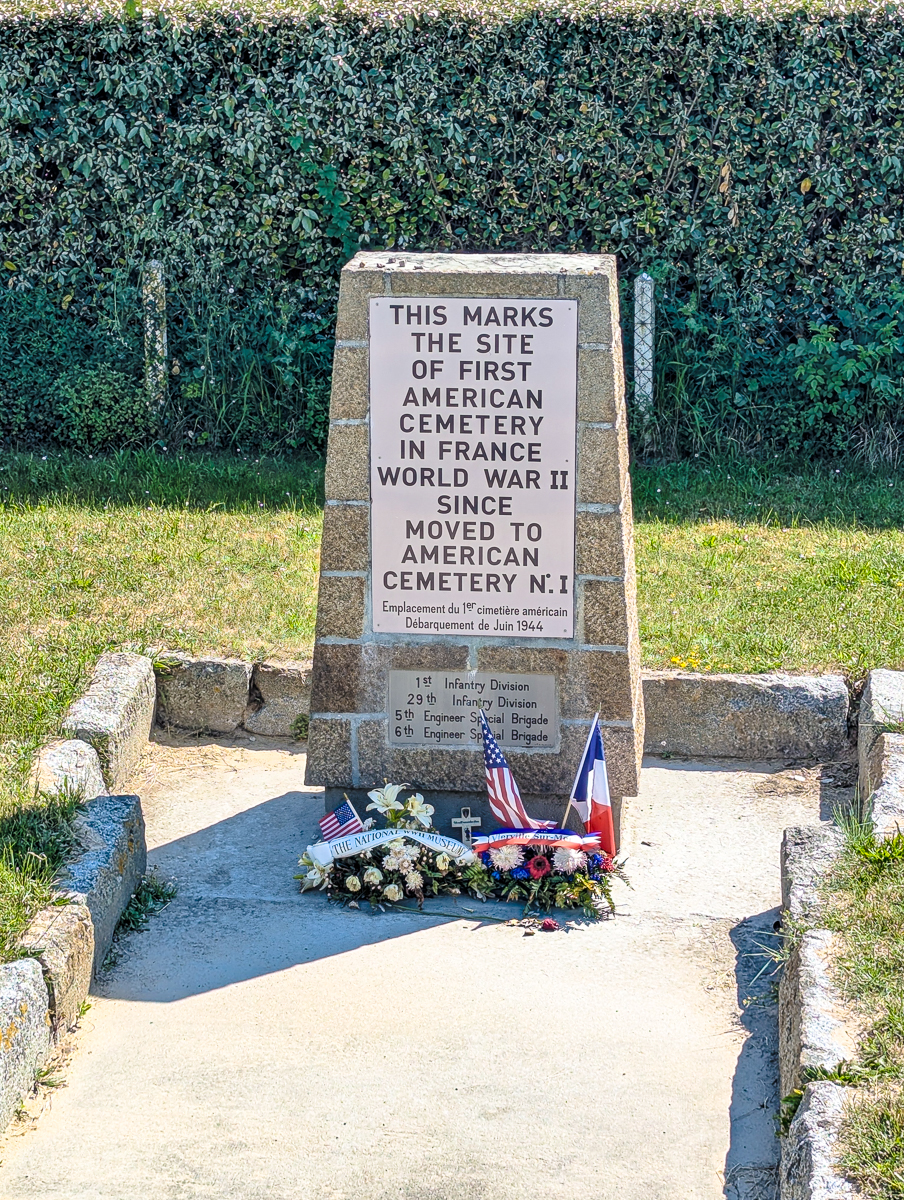
16. Pointe du Hoc
The site at Pointe du Hoc is one of the most impressive D-Day sites in Normandy (if you ask me). You can see well-preserved German batteries and bunkers, an unreal array of bomb craters, and an unprecedented chance to see one of the most incredible D-Day battle sites with your own eyes. (I also watched a baby sheep being born on my first visit, I kid you not.)
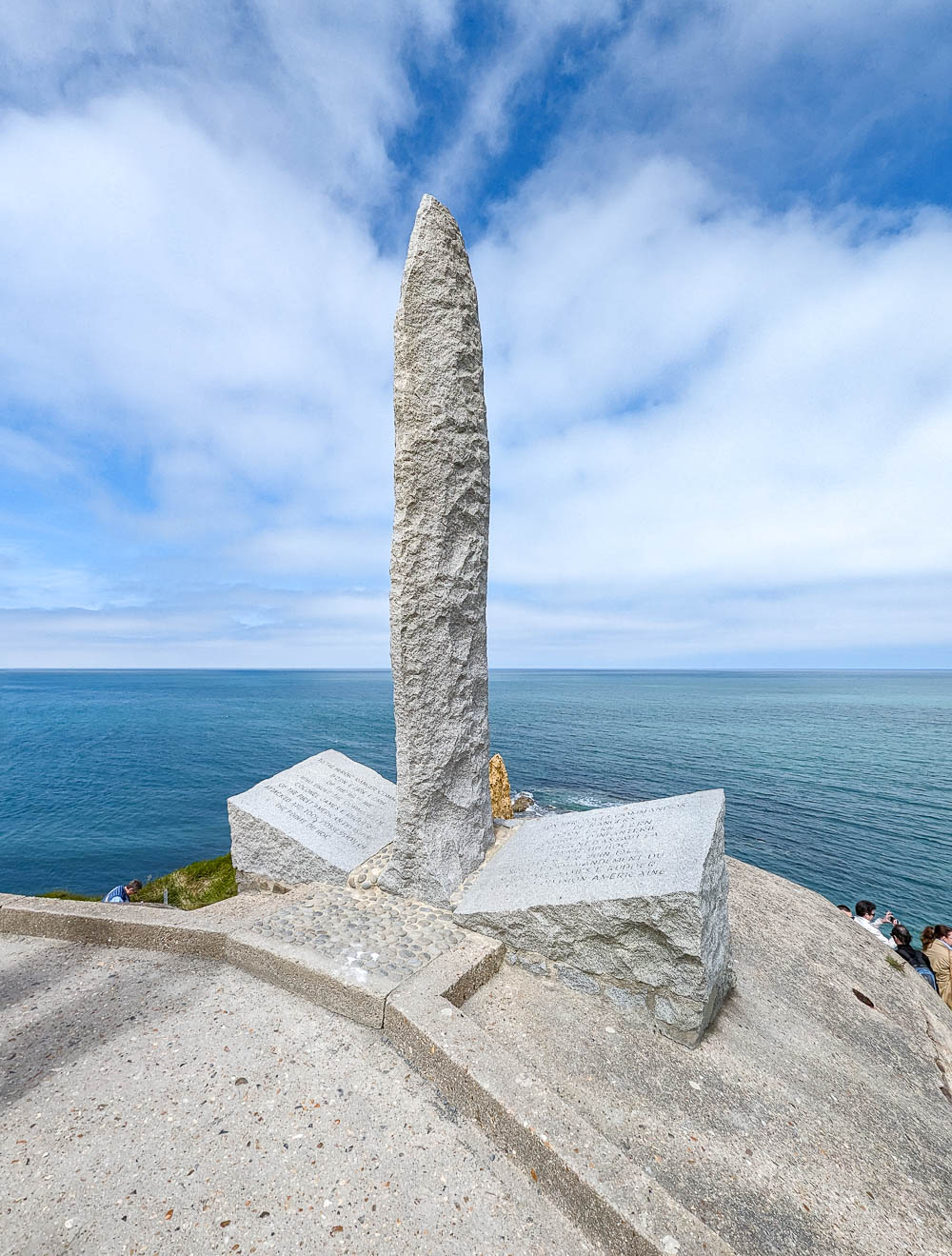
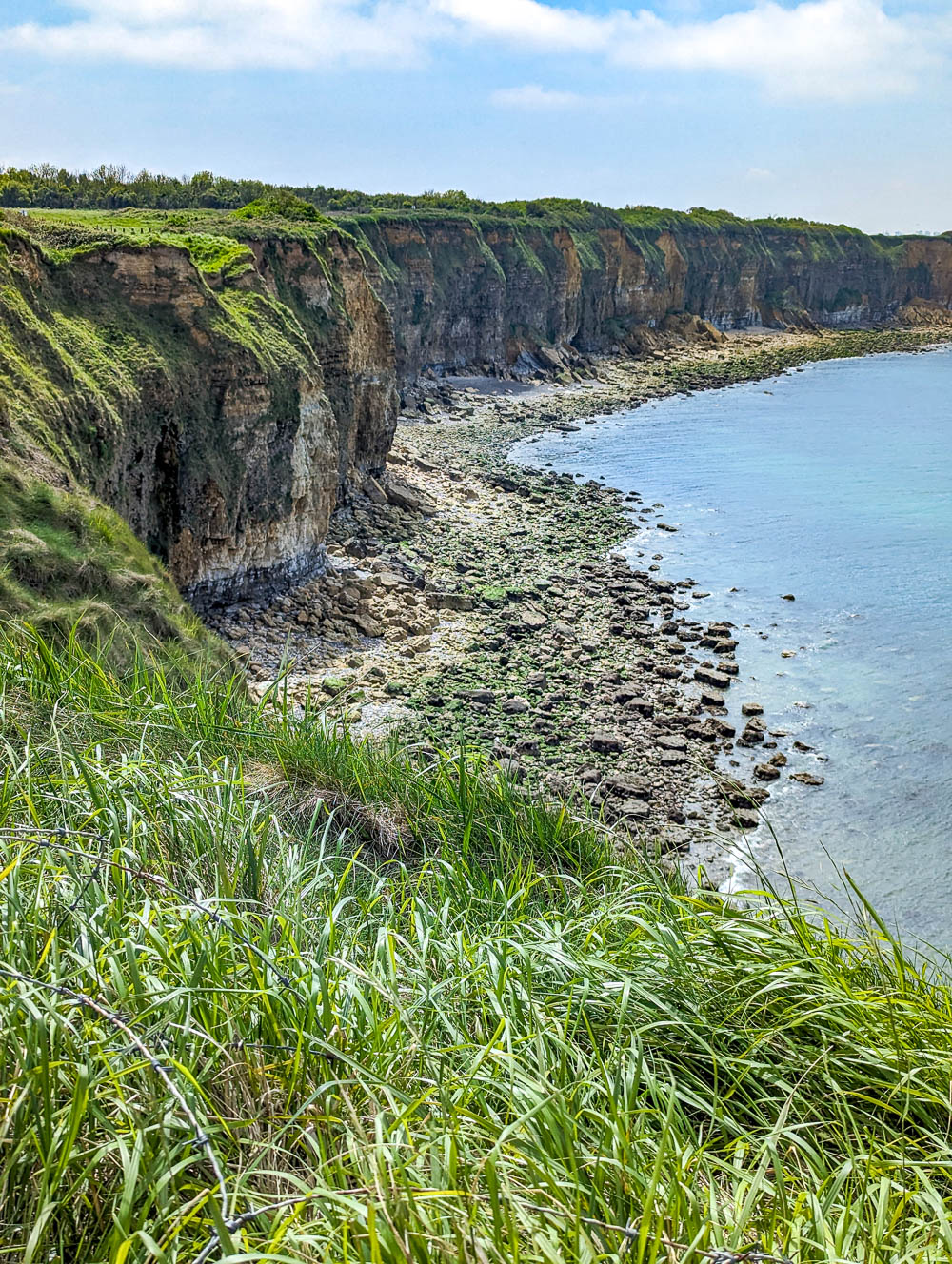
What happened at Pointe du Hoc?
Pointe du Hoc is a 100-foot cliff and the highest point between Omaha and Utah Beach. During World War II it was fortified by the Germans who believed it would be impossible to breach.
However, on the morning of June 6, 1944, the US Army did indeed capture Pointe du Hoc by scaling the cliffs using grappling hooks and ladders fired from rocket launchers. Surprise!
At Pointe du Hoc today there are a handful of memorials and the remainders of German gun casemates scattered around the area. The hilly landscape you see is actually hundreds of bomb craters, though today they’re covered with grazing sheep. (Check out what Pointe du Hoc’s bomb craters look like from above here.)

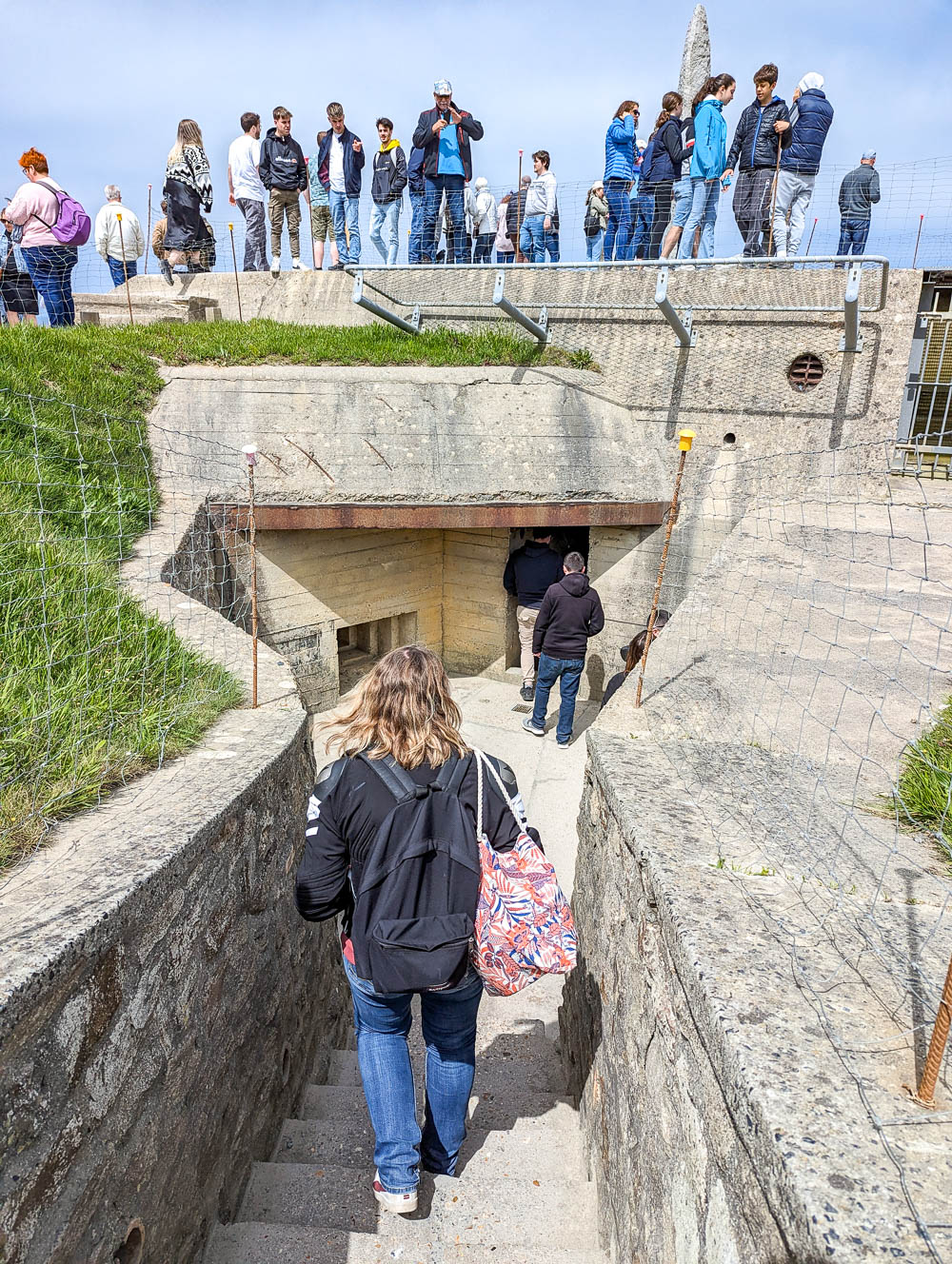

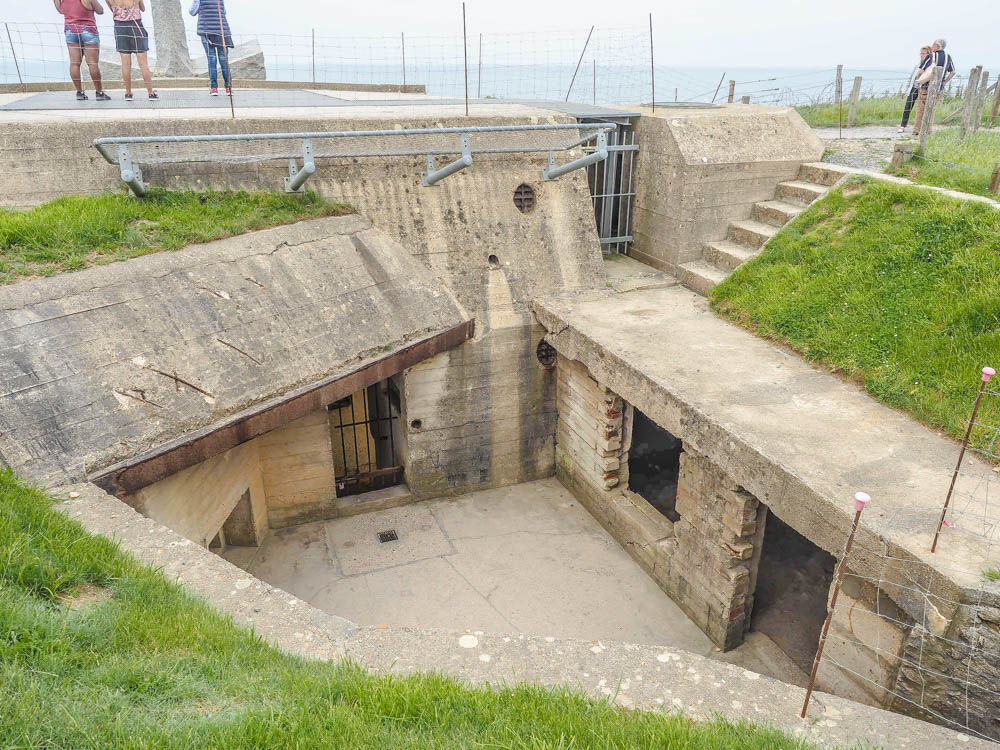

17. Overlord Museum
In the nearby town of Colleville-sur-Mer you’ll find the Overlord Museum. This museum focuses on the part of the World War II story that stretches from the D-Day landings (known as Operation Overlord) to the liberation of Paris. Many of the sections focus on one particular date within this timeframe.
The Overlord Museum was founded on the private artifact collection of Michel Leloup, a local teenager who personally witnessed the war. It includes personal effects found on the battlefields, lots of tanks and armored vehicles, documents, and more. (They even have an original grappling hook picked up from the cliffs at Pointe du Hoc.) Most of it is arranged in well-done dioramas to give context to all the pieces.
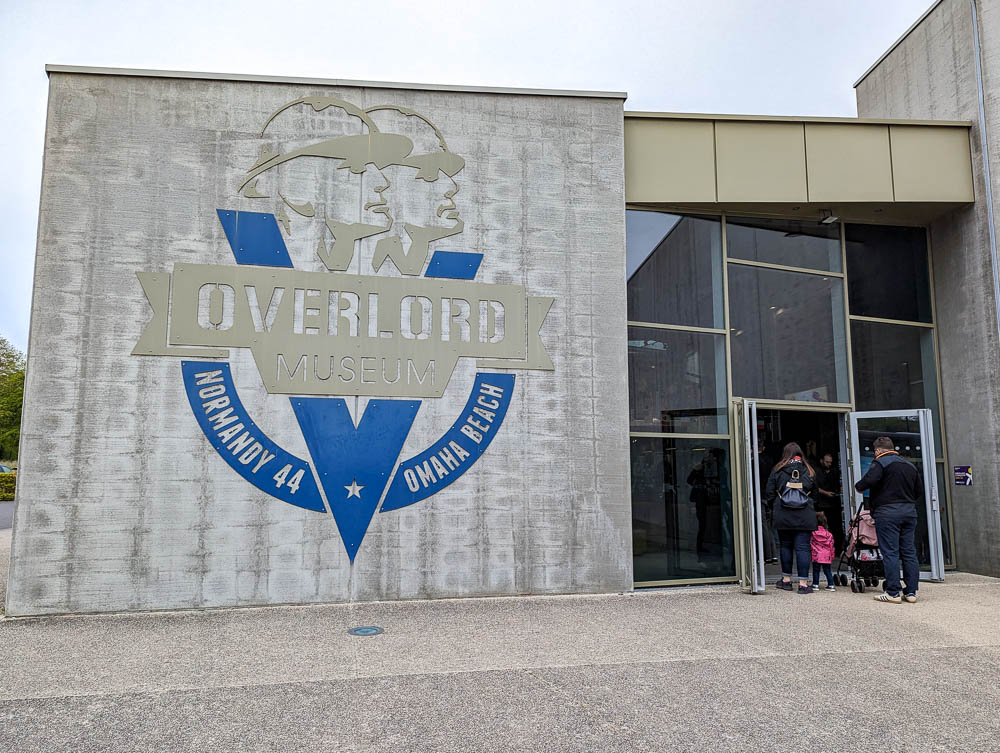
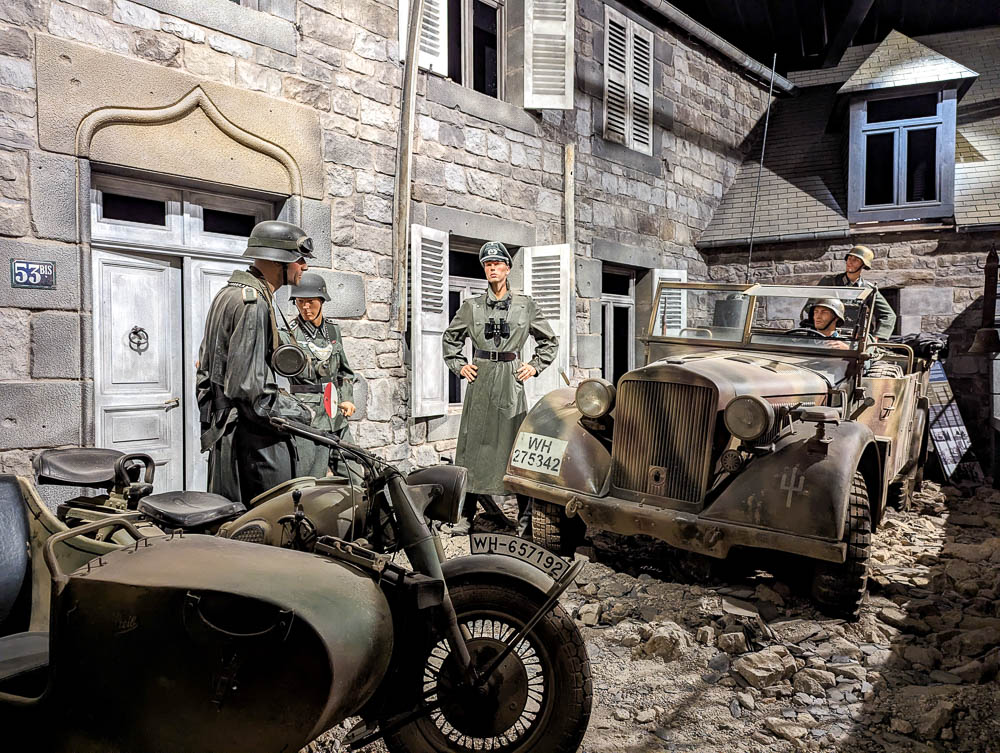
Note: On busy days this museum can get extremely crowded due to the narrow passages between the exhibits. Just prepare to take your time and go with the flow.
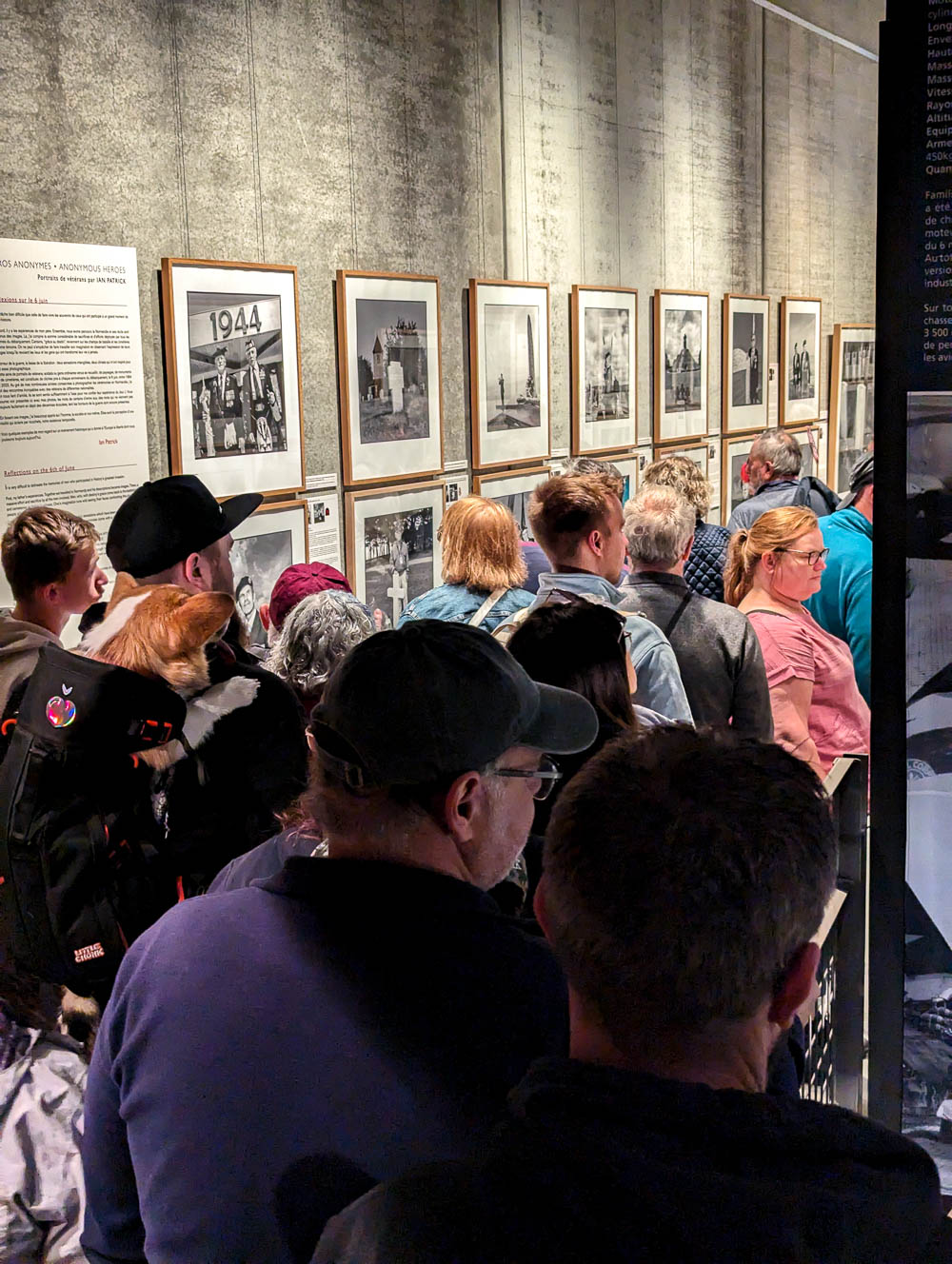
18. La Cambe German Military Cemetery
Visiting a German cemetery in Normandy may seem a questionable or even controversial. However, I do think it’s important and one of the most interesting places to visit near Omaha Beach.
La Cambe German Military Cemetery is vastly different from the American cemetery and I feel it’s worth a visit if only to see this stark contrast. Normandy American Cemetery is bright, beautiful, filled with white crosses and Stars of David, and overlooks a pristine beach. La Cambe is otherwise dark, heavy, and filled with imposing black stone crosses, nameless headstones, and mass graves.
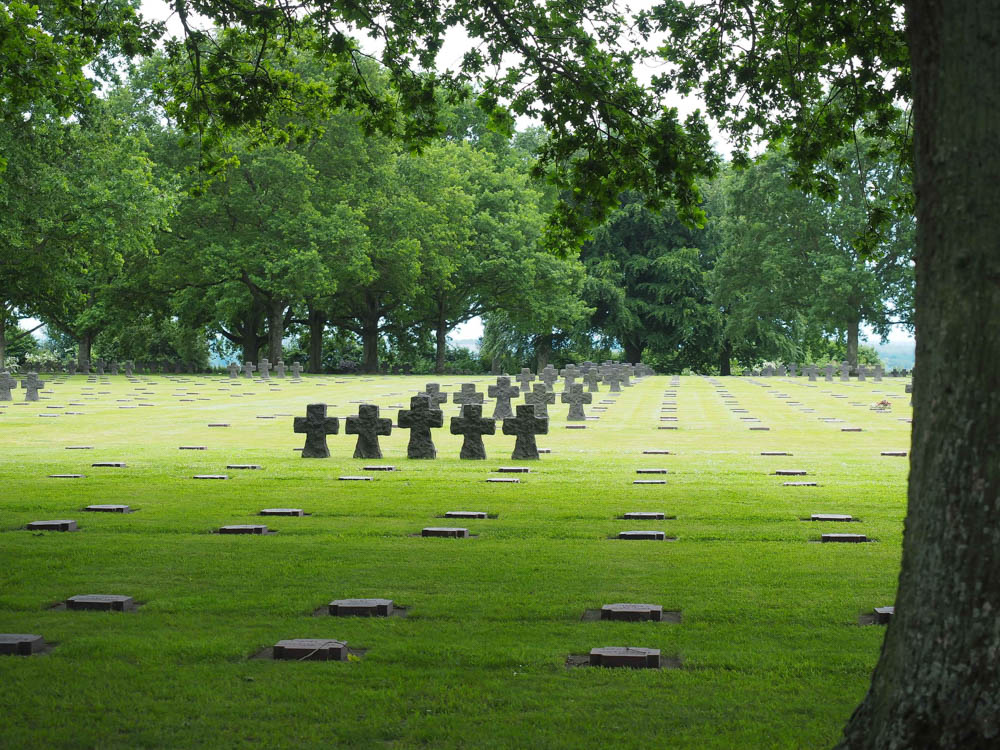
La Cambe German Cemetery is actually the largest cemetery in all of Normandy, France with a total grave count of 21,222 – all victims of the Battle of Normandy. In the center of the cemetery is a large mound–a mass grave holding the never-identified remains of almost 300 German soldiers.
On top of that are the statues of a man and women meant to represent the mothers and fathers who lost their children to the war. It’s eerie.
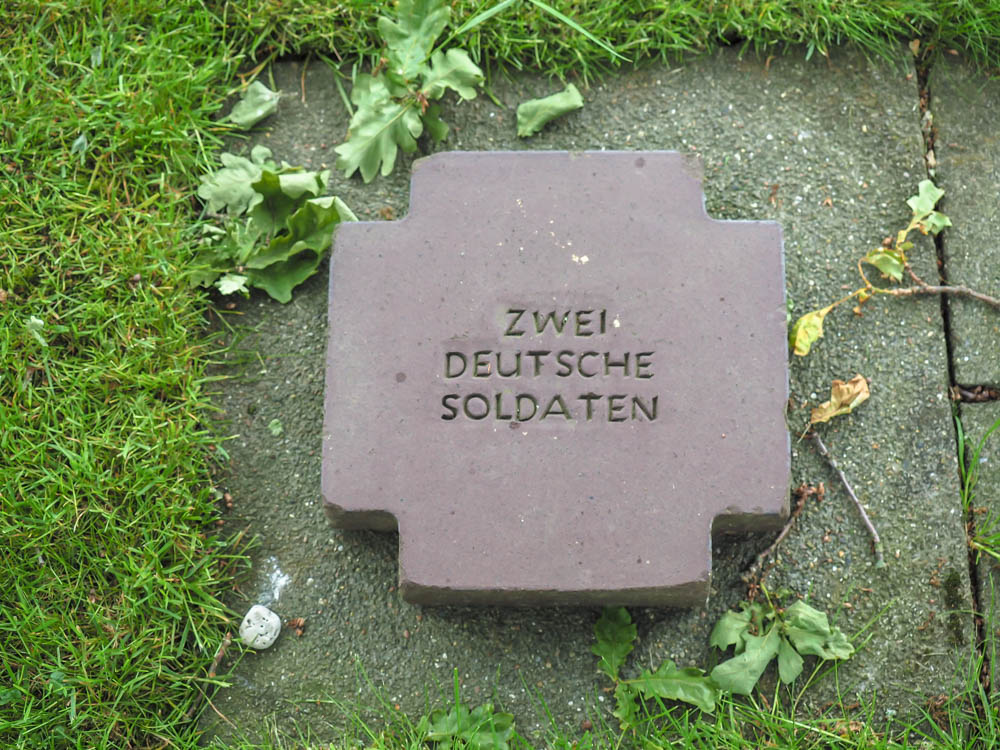
19. Museum of Underwater Wrecks
Of all the interesting World War II museums in Normandy, this may be one of the most unique. The Museum of Underwater D-Day Wrecks displays personal objects, tanks, and other artifacts resurfaced from D-Day’s sunken warships. (This museum is known in France as Musée des Epaves Sous-Marines du Débarquement.)
The private collection of the Museum of Underwater Wrecks includes:
- Weaponry
- Bulldozers
- Amphibious tanks
- As well as personal items found aboard these sunken vessels
This collection of items was gathered over a thirty-year period by a man named Jacques Lemonchois. The items are displayed exactly as they were found—rusted, barnacled, broken.

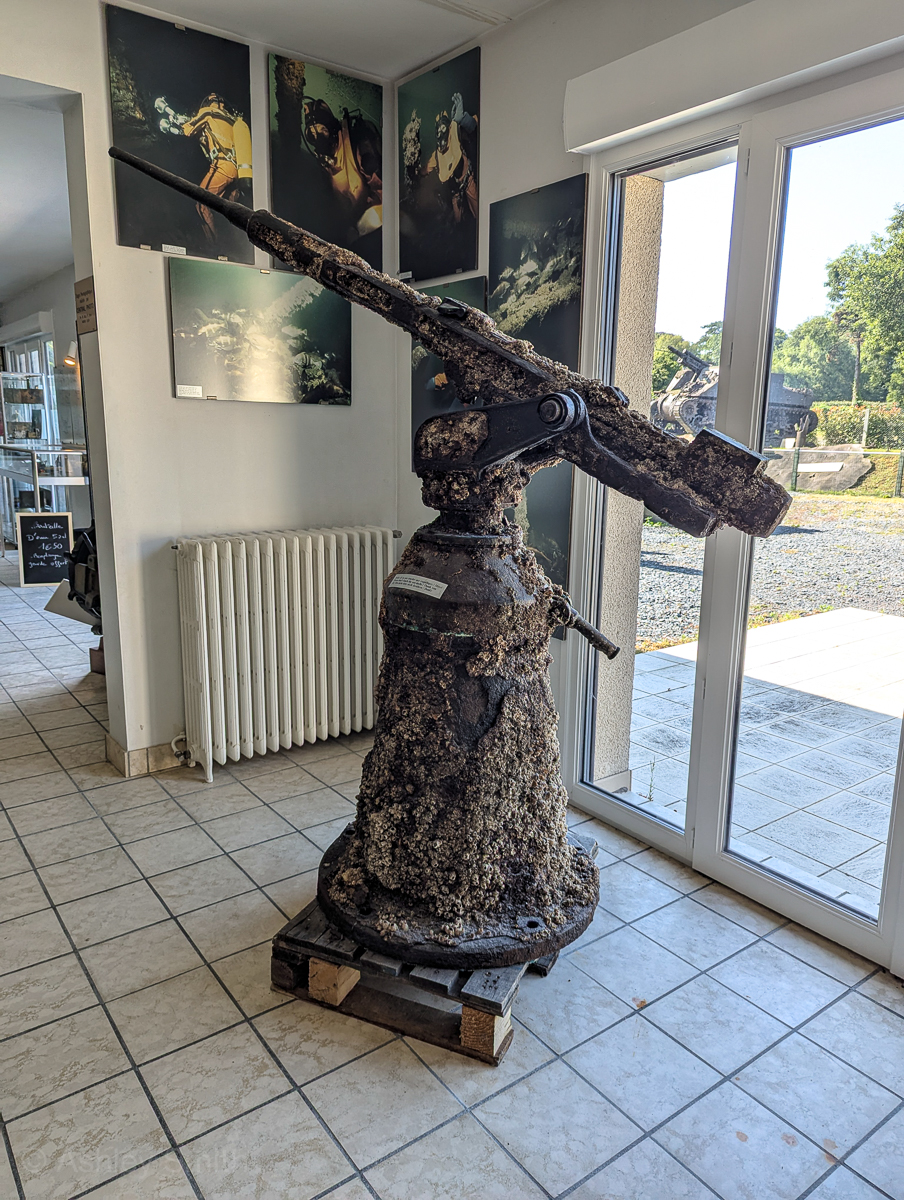

20. Normandy Victory Museum
One of the newer museums in these parts is the Normandy Victory Museum, opened in 2017 on the site of the former Normandy Tank Museum. It’s comprised of 10,000 original artifacts, 20 military vehicles, archival film footage, and over detailed historical 20 exhibits.
This museum is also referred to as the Hedge Battle Museum as it focuses on the lesser-known Battle of the Hedgerows. In this museum you’ll learn specifically about what happened in the days and months that followed D-Day.
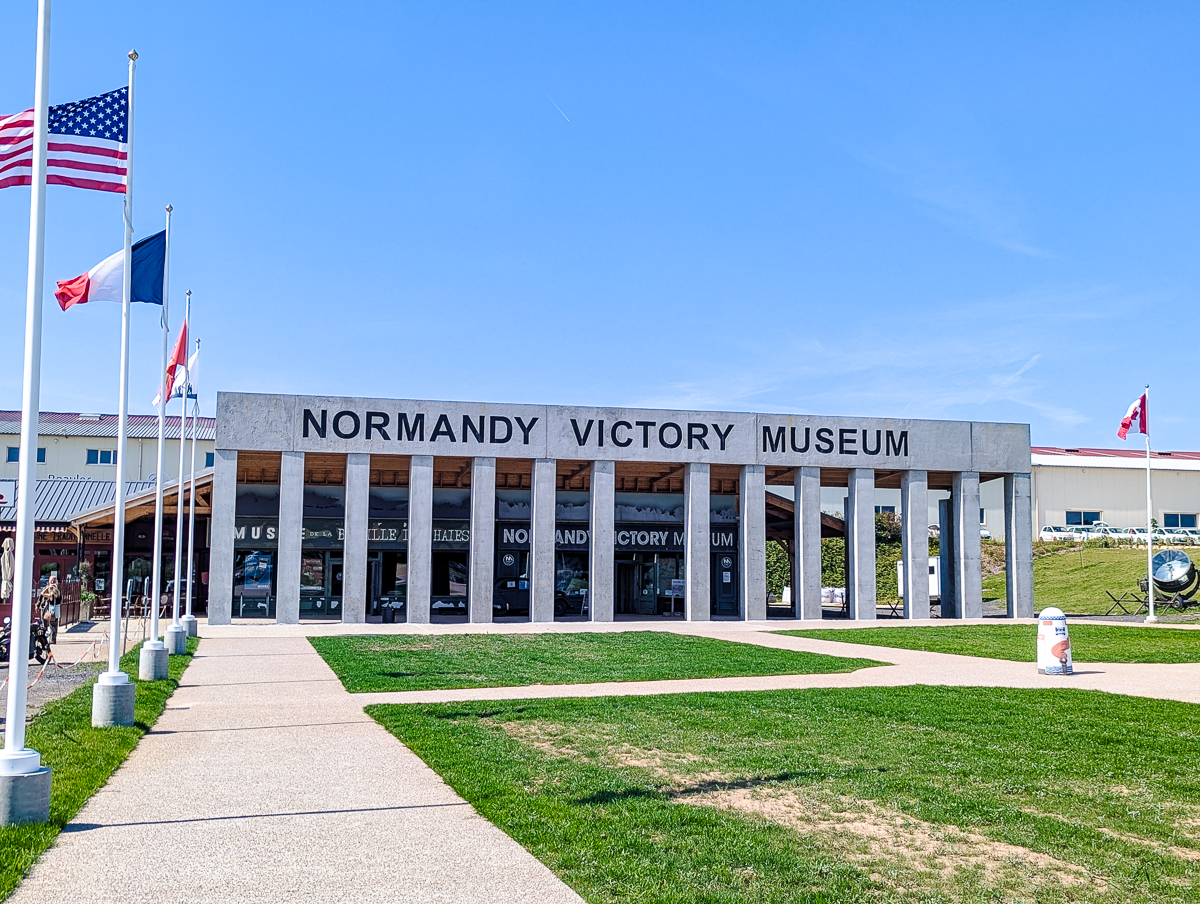
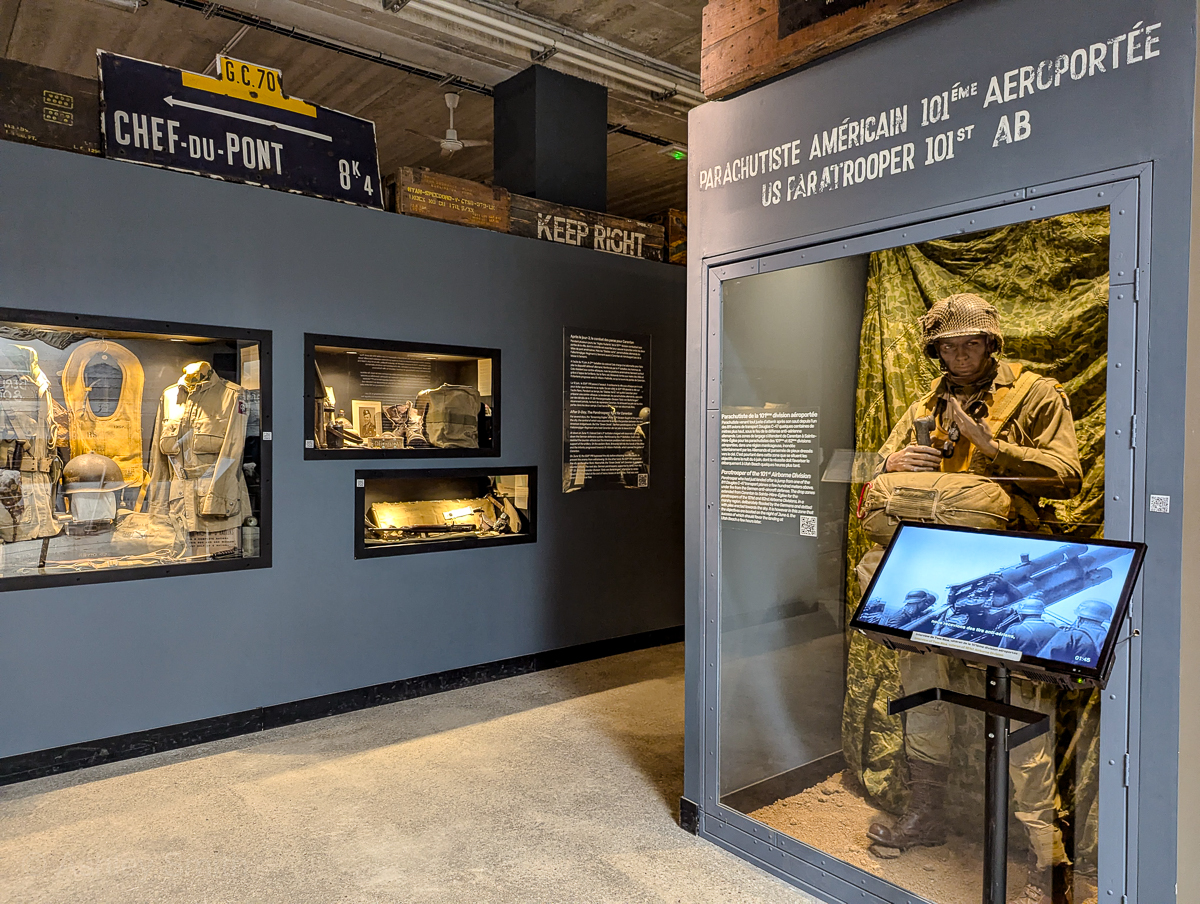
21. Maisy Battery
The Maisy Battery was one of the largest German fortifications along the Normandy beaches and was poised to target both the Omaha and Utah Beach sectors. The site was completely buried after the war and was only uncovered as recently as 2006. When you arrive, you’ll think you’ve gone to the wrong address since you really can’t see anything around!
Today, the Maisy Battery is open to visitors and you can tour the more than 2 miles of German trenches and even go inside the original bunkers and other structures. It’s a maze of a site but definitely lives up to its slogan: “Normandy’s best kept secret.”
Pro tip: Parts of the site can get real messy if it has rained recently. Be sure to wear proper outdoor shoes you don’t mind getting a little dirty/muddy/wet (i.e., not white sneakers like I did). I’d also recommend wearing long pants as most of the pathways are overgrown and there are a lot of prickly things.
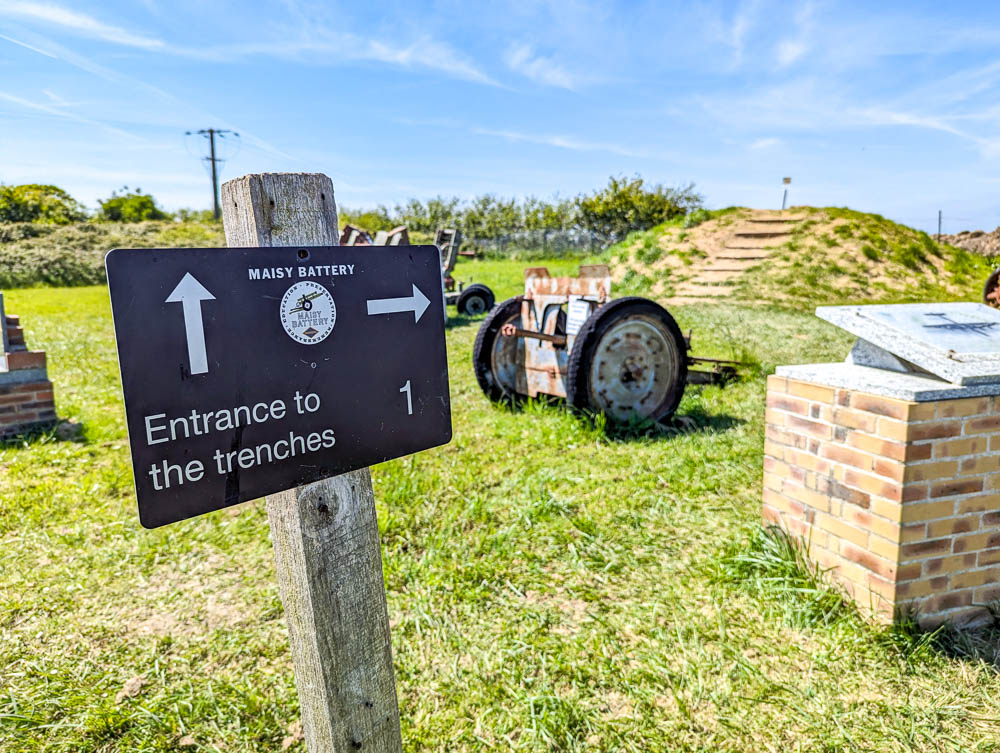
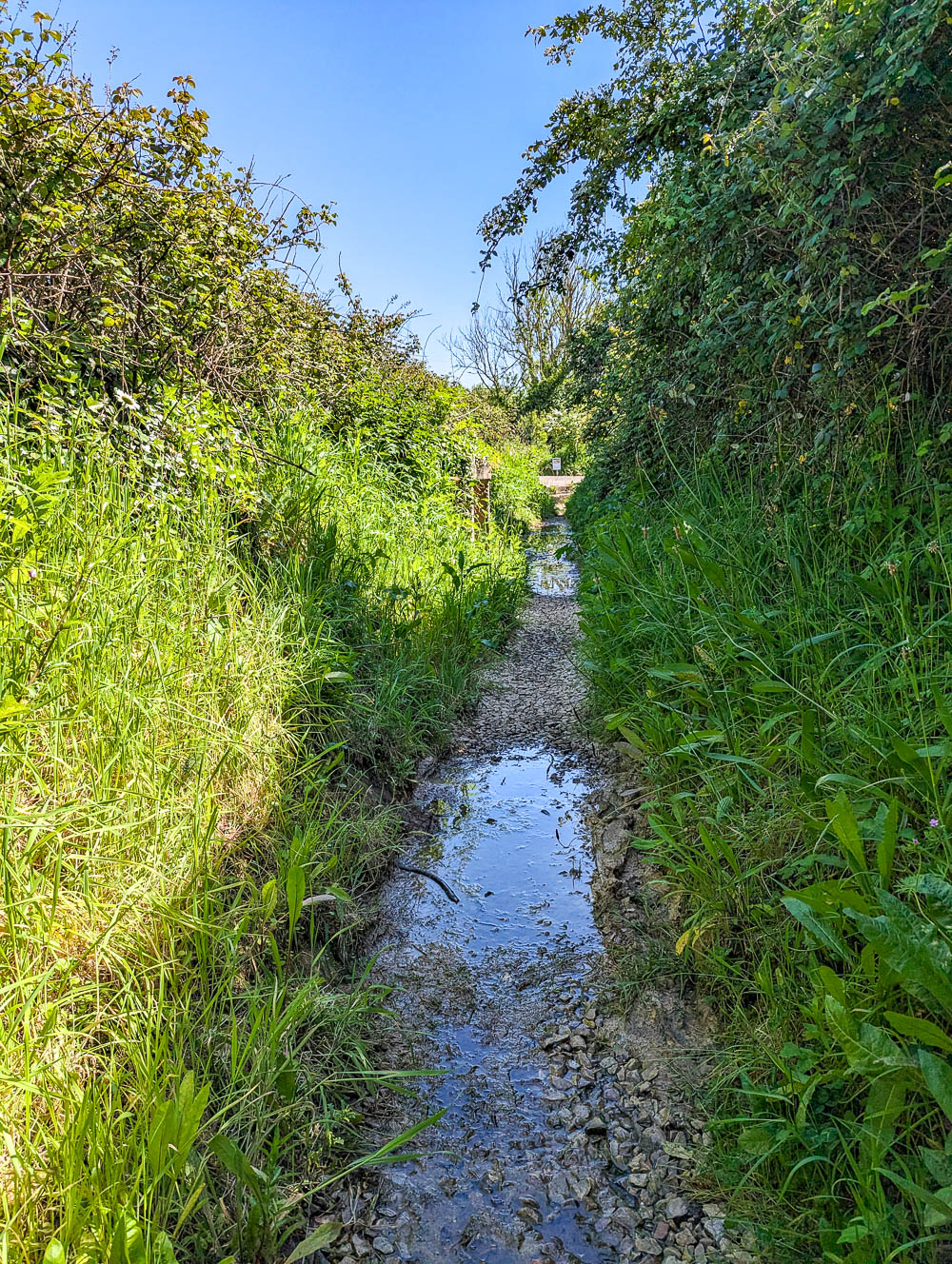

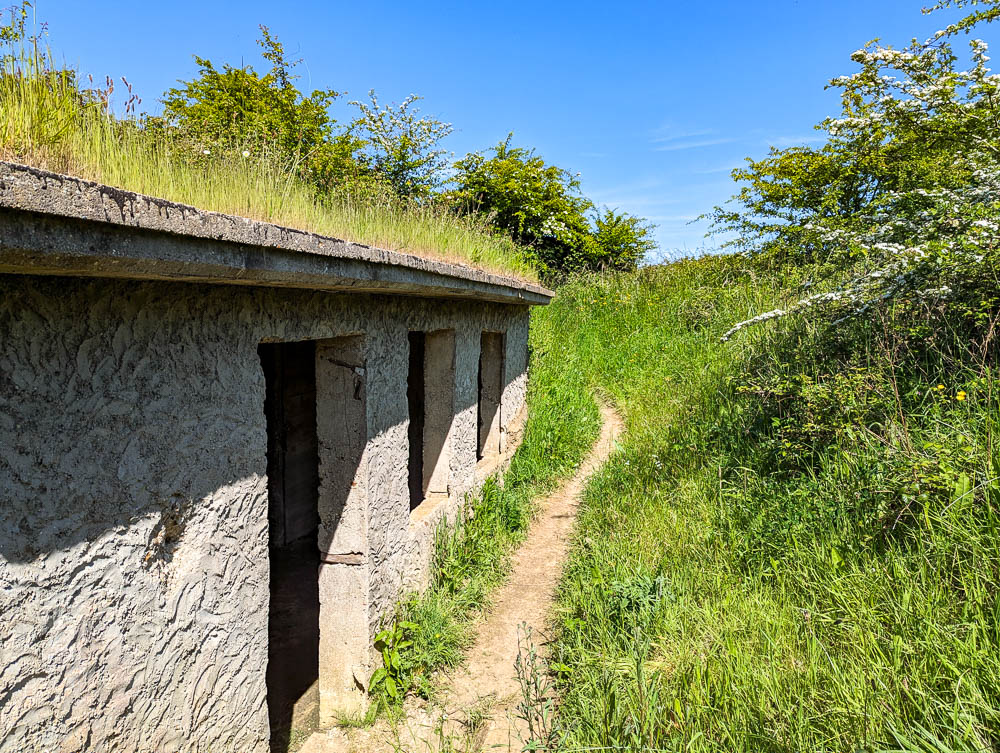
22. Big Red One Museum
Right down the street from the Overlord Museum is a smaller museum solely dedicated to the “Big Red One” – the 1st US Infantry Division. With its unique collection of artifacts, you can learn more about this unit that landed here on Omaha Beach on D-Day.
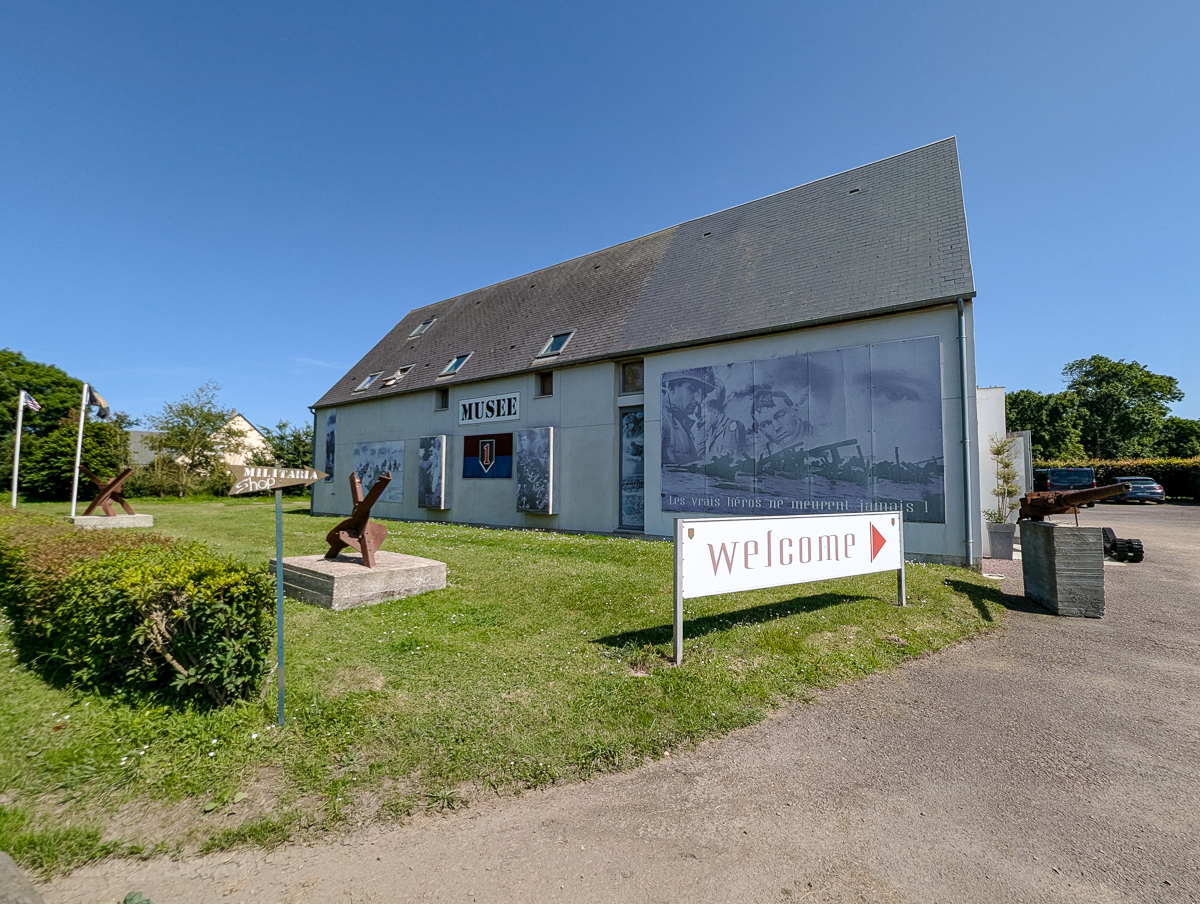
23. Even More German bunkers
What to see at Omaha Beach goes way beyond museums and memorials. You can also still see many uncovered German bunkers all around the area, just as they were left. Keep a lookout for: (all on the map)
- WN65 (Widerstandsnest 65) – Just a 6-min walk from the Charles Shay memorial if you’re already parked here
- Widerstandsnest 62 – Near the Croix de Guerre 5th Engineer Special Brigade memorial
- Widerstandsnest 60 – A little out of the way but a really neat site
But one of the largest and most complex German bunker sites in Normandy (and the one with the best visitor experience) is the Maisy Battery.
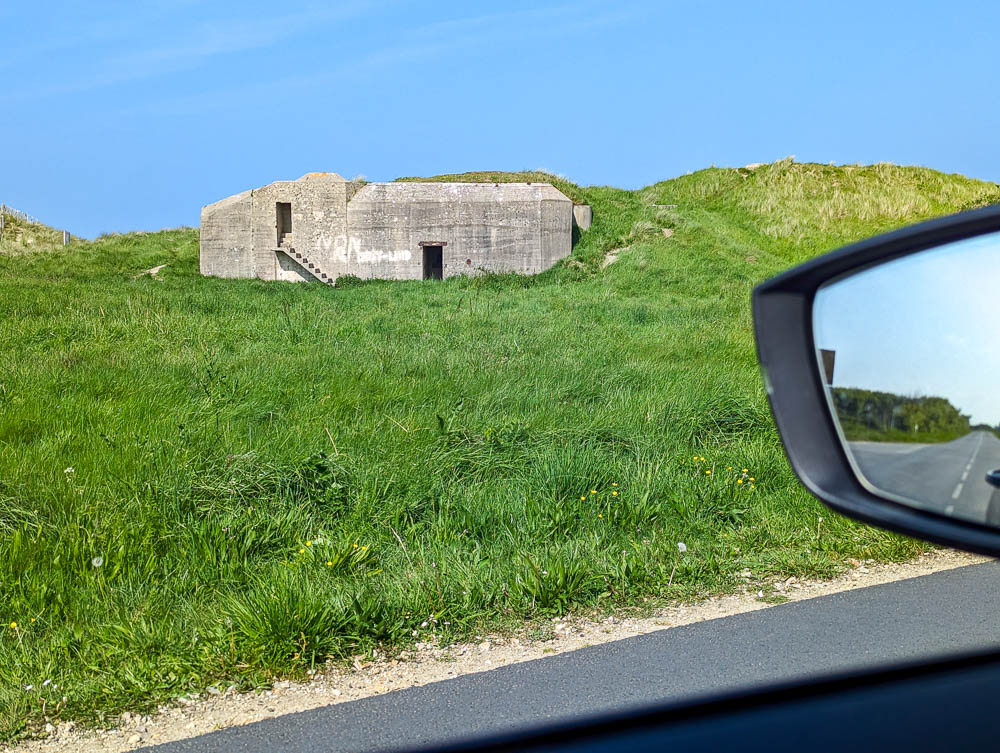
Where to stay when visiting Omaha Beach
If you’d like to base yourself in the Omaha Beach sector during your Normandy visit, check out these great hotel options:
La Sapinière
If it’s Omaha Beach you want, Omaha Beach is what you’re gonna get at La Sapinière. This adorable hotel is right across the street from Omaha Beach, just a 1-minute walk to the sand.
The place is modest and budget-friendly, but has excellent reviews and a 9/10 rating. Guests love the hotel’s restaurant, its convenient location, and they rave about the friendly staff.
Book your stay here: La Sapinière
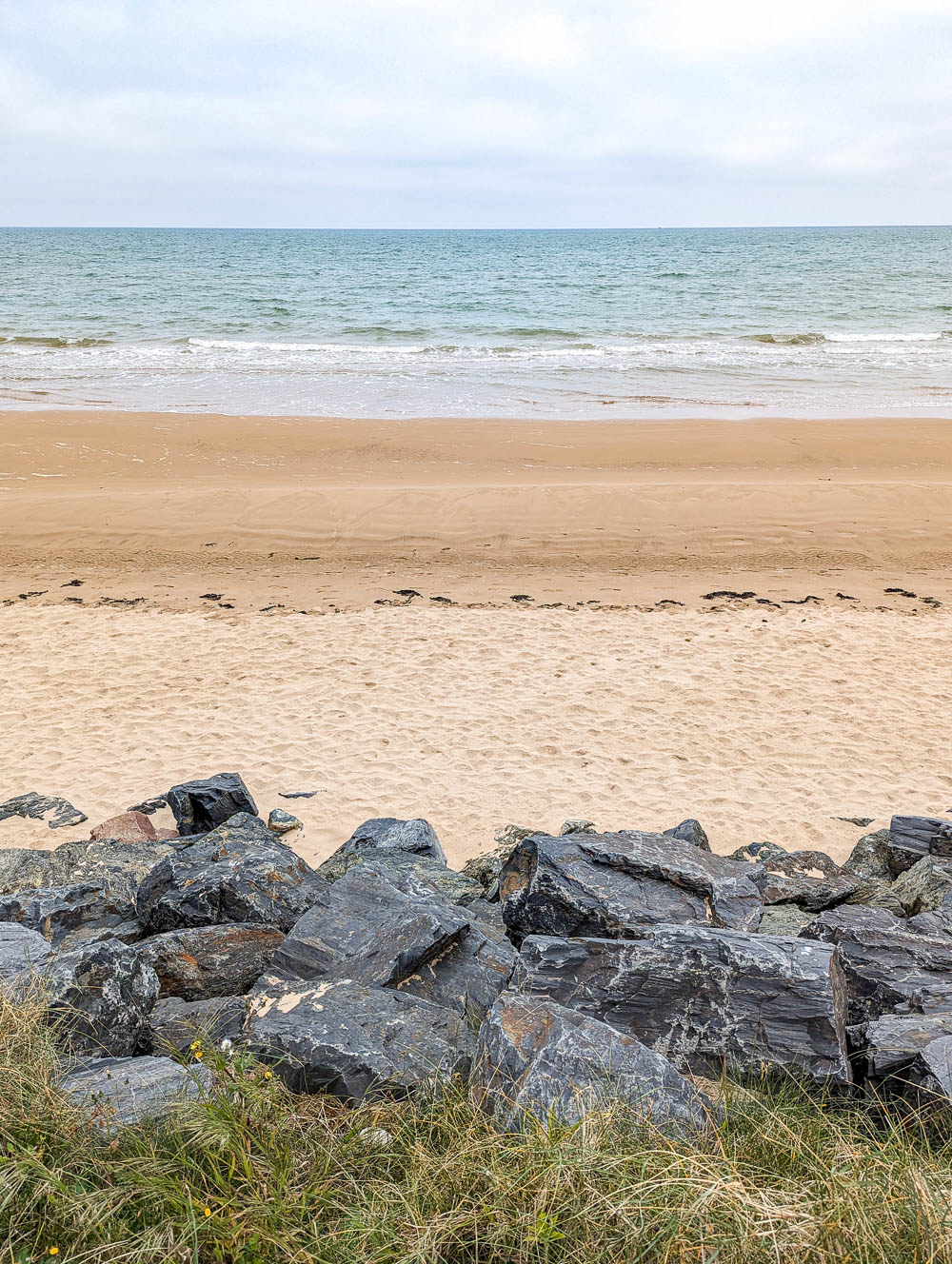
La Ferme aux Chats
Located just a short drive from Omaha Beach in the town of Formigny is La ferme aux Chats, an adorable bed-and-breakfast.
With close to a 10/10 rating on Booking.com, this B&B is well-loved for its delicious homemade breakfast (it is located on a farm after all), its relaxing atmosphere, the size and cleanliness of the rooms, and the hospitality of its staff.
Book your stay here: La Ferme aux Chats (Yes, that means ‘The Cat Farm.’)
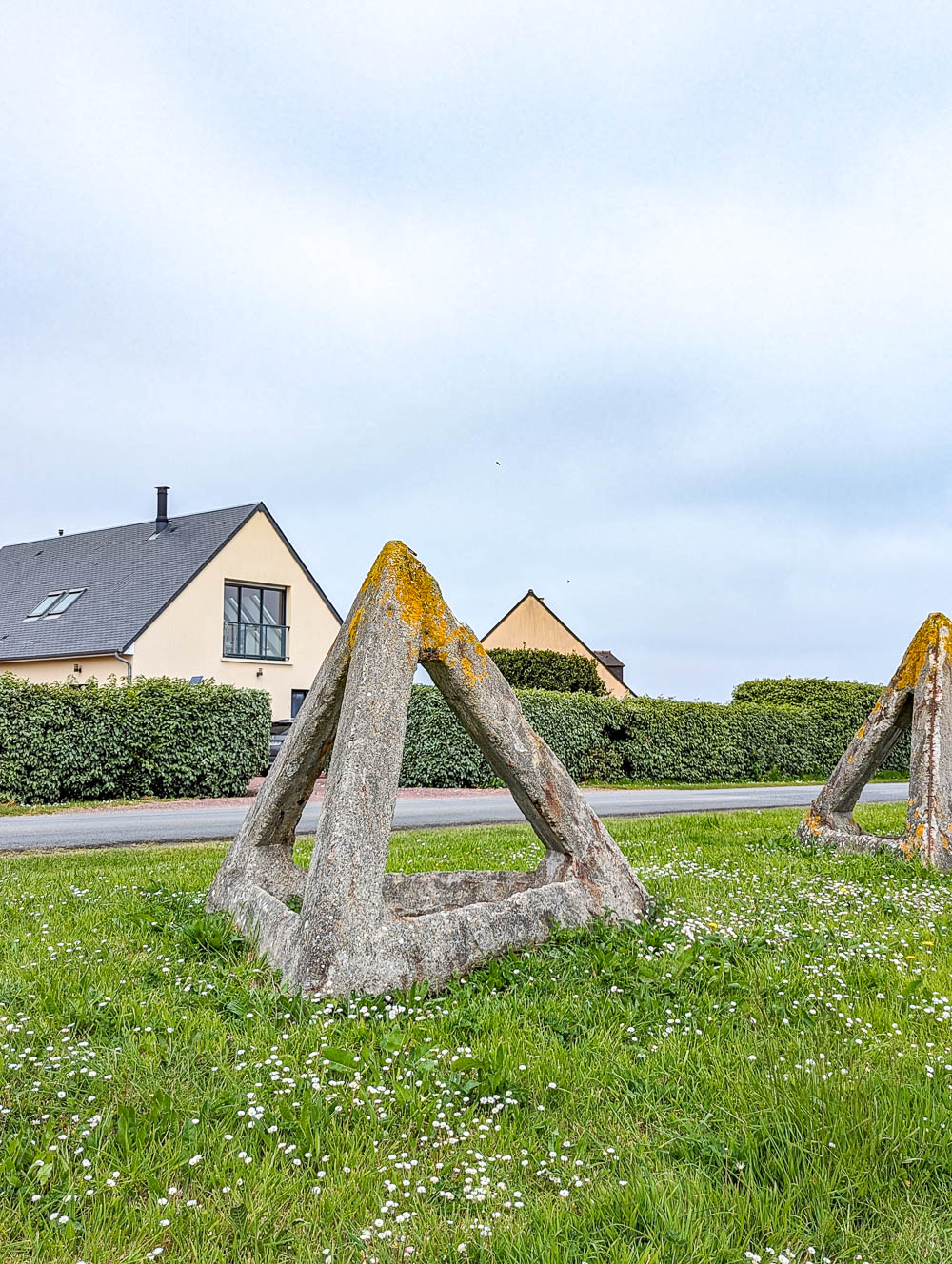
More info for your visit to Omaha Beach
- Want to see more Omaha Beach hotels? Find great Omaha Beach hotels here. (But Hotels.com and Expedia are also worth checking out.) VRBO is great for rental properties.
- Rental cars: Check out the best local rental car deals here.
- Travel planning: Pick up a Normandy guidebook and this must-have France customs and culture guide.
- For Normandy tours: Check out the best local options and the best day tours from Paris here.
- Be sure to watch Saving Private Ryan, The Longest Day, and Band of Brothers before your visit!
- What else have I covered in France? Check out my France archives here.
Like this post? Have questions about visiting Omaha Beach? Let me know in the comments below. Have a great time in Normandy!

Save this info, pin this image:
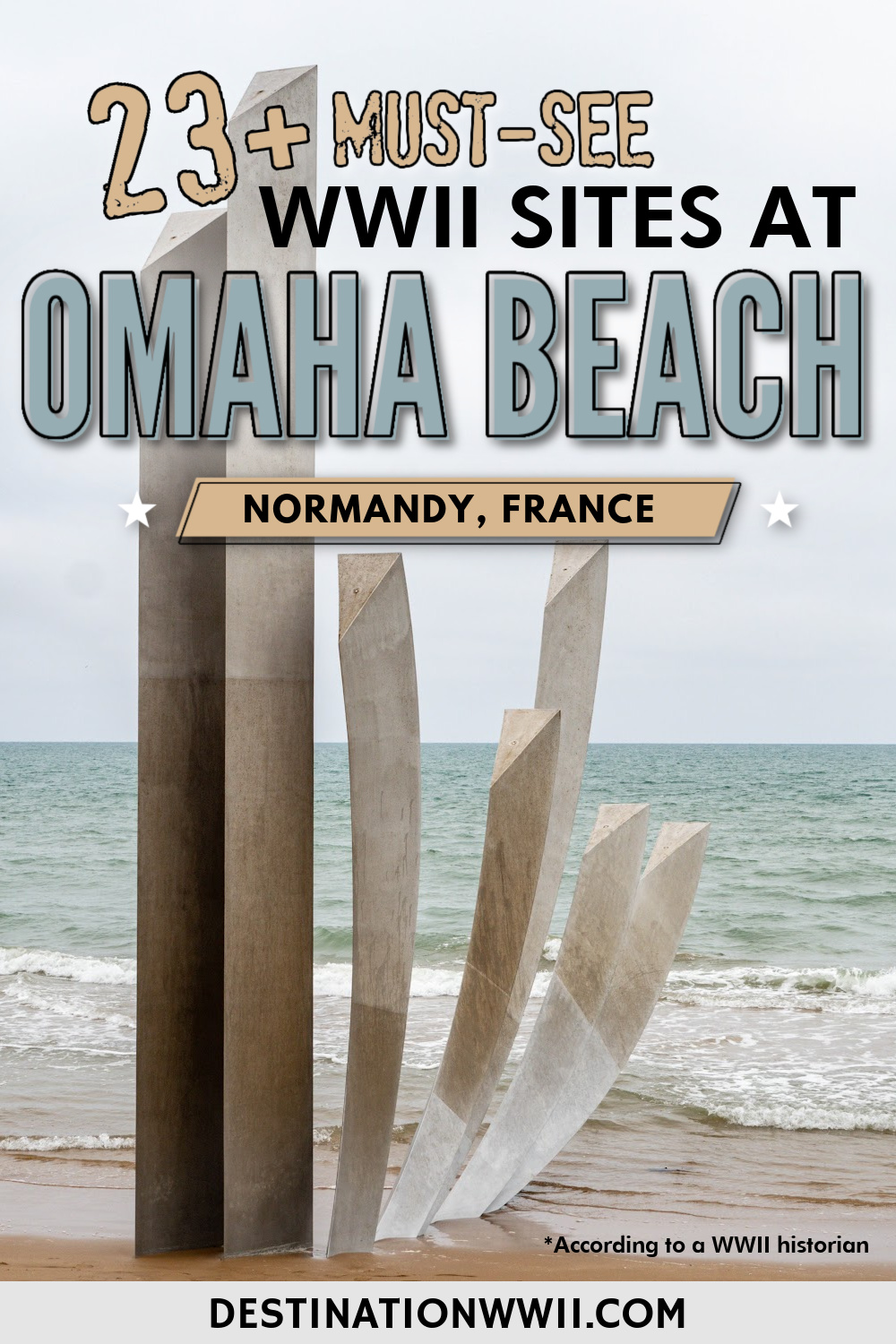
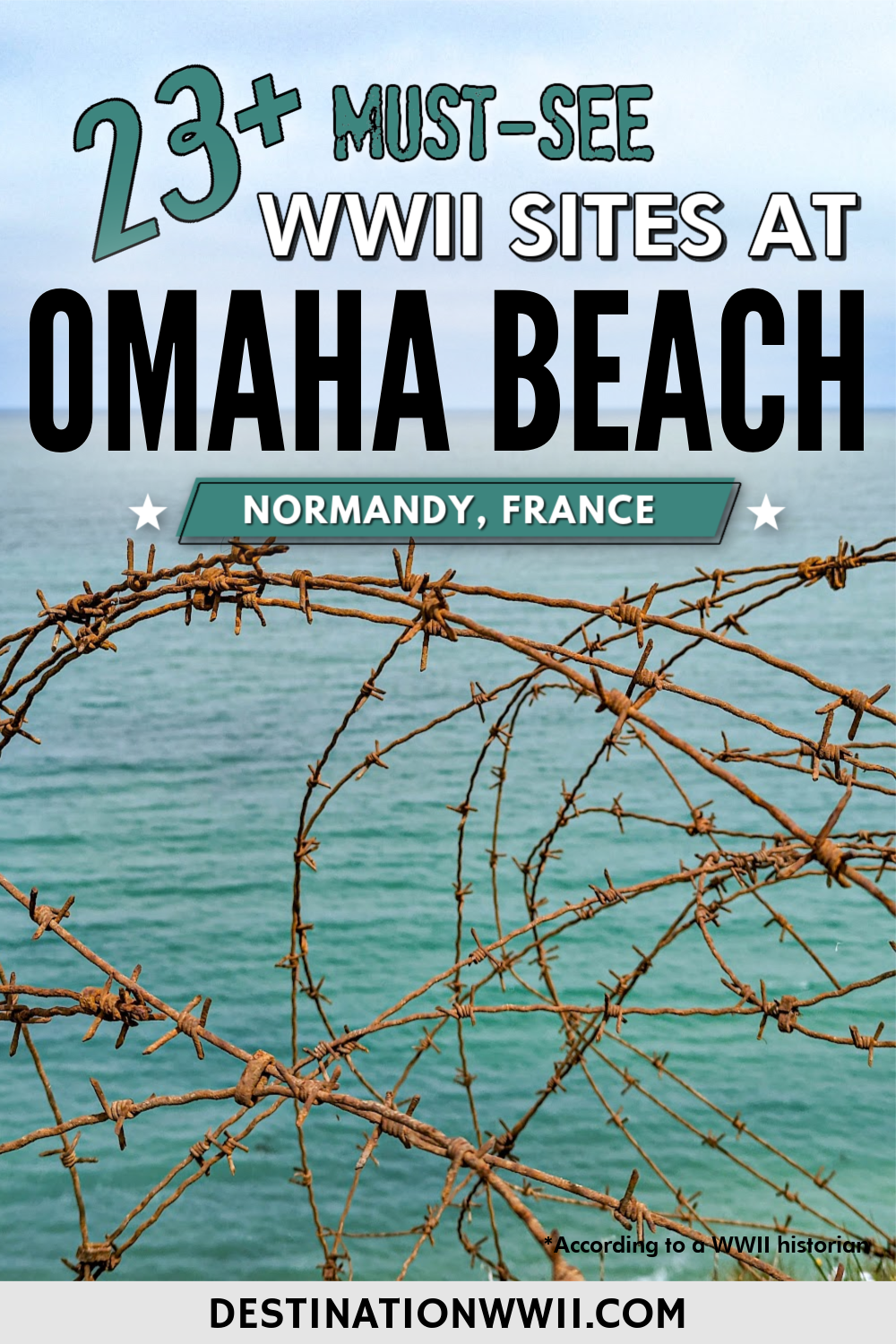
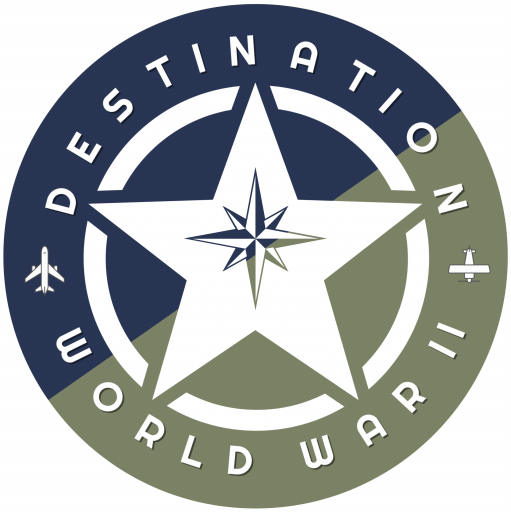
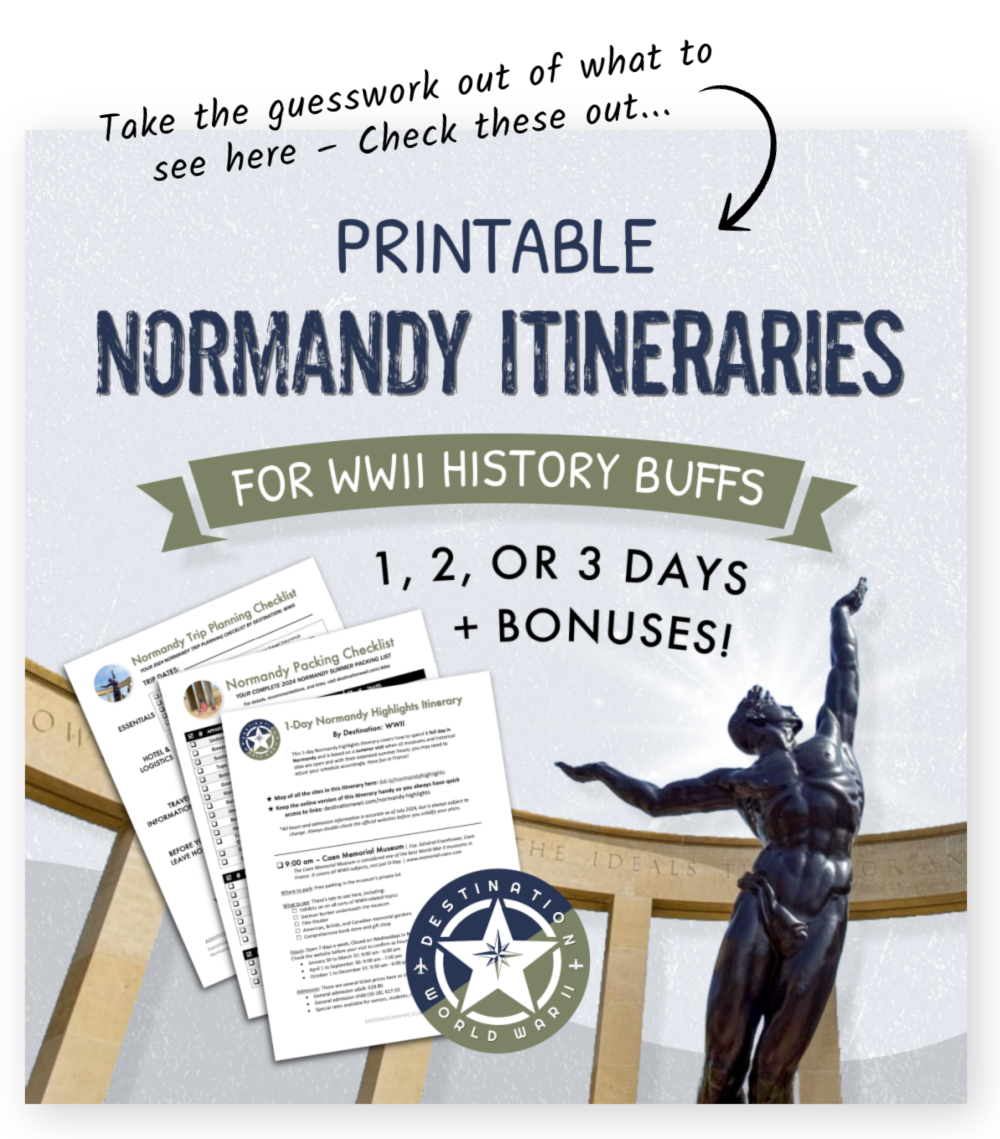

Ashley, your site is fantastic.
Thank you so much.
Obviously there is so much to see and do in the area that one two day tour ( 4 with travel days) is not going to scratch the surface. Your writing is so helpful I even changed our tour reservation to your recline ration via your site. In the second day I would love to do a tour of the Bayeux area villages with cheese and cider/ calvados tasting. Especially if some of the villages have a little history. However I have not found anything like this. We did not want to rent a car. Can you suggest anything or a site I may have missed? Our open date is Sept 5, 2025
Thanks so much.
Marilyn
Thank you so much for the compliments, Marilyn!
I found a tour that seems to be exactly what you’re looking for: Check this one out. However, know that the Bayeux Tapestry is off-display until October 2027 as they renovate the museum. So if you do plan on booking this one, be sure to ask them what they plan to offer in its place. Otherwise, it looks like it checks all your boxes! Have a great trip!
Your posts are informative, thoughtful, emotional and well written. Your posts draw us into all of these historical sites without even going there. Thankfully we will be going next week. Thank you for all of this information. I especially love the “10 things to know” and the “7 sites to see” posts. This one is very meaningful too, because have a 101 year old WWII veteran in our town who landed on Omaha Beach on D Day. He has shared first hand accounts of that horrific day. Your description of it being “hell on earth” is quite accurate, We look forward (with sadness) in seeing the sites he has told us about. Thank you again for your wonderful website!
Thank you so much, Carrie! I hope you enjoy your trip!